- Home
- Our Heritage
Swipe to explore
 Border Security & Immigration
Border Security & Immigration
Land Checkpoints
1924
1929
1940
1966
1977
1980
1998
1999
2007
2008
2010
2011
2017
2024
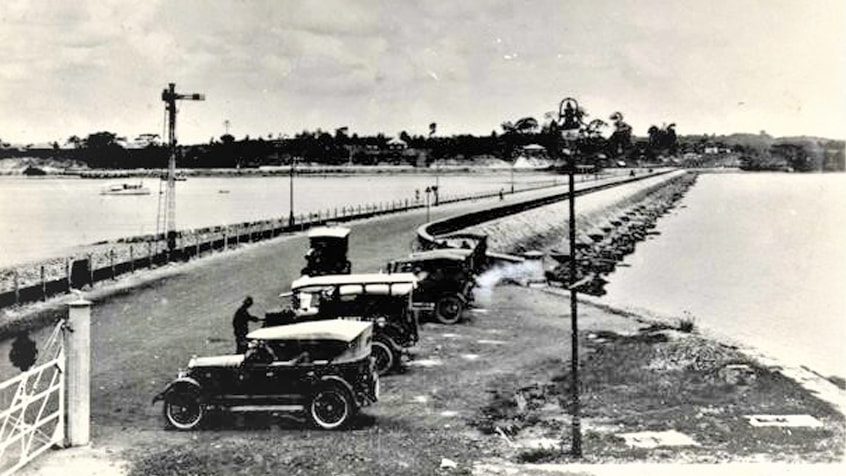
1924: The 1.05km Johor Causeway was officially opened, creating a road and rail link between Singapore and Johor Bahru to facilitate increasing volume of goods and people across the borders.
The Causeway was widened between 1960s and 1980s to ease traffic congestion.
The Causeway was widened between 1960s and 1980s to ease traffic congestion.
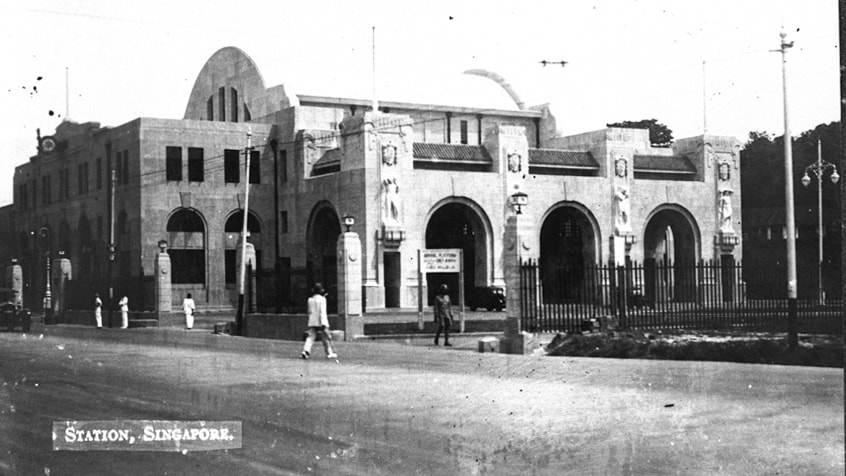
1929: As early as the 1920s, Singapore was envisioned to be the starting and ending point of a rail network, which would stretch west to Calais in France, north to Hankou in China and onwards to the Trans-Siberian network. This gave impetus to create a main railway station worthy of its role as a gateway to Asia. Thus, between 1929 and 1932, the railways in Singapore were realigned and the Tanjong Pagar Railway Station was opened on 2 May 1932 by then Governor of Singapore, Sir Cecil Clementi. The station was in operation for almost 80 years before it ceased operations on 1 July 2011.
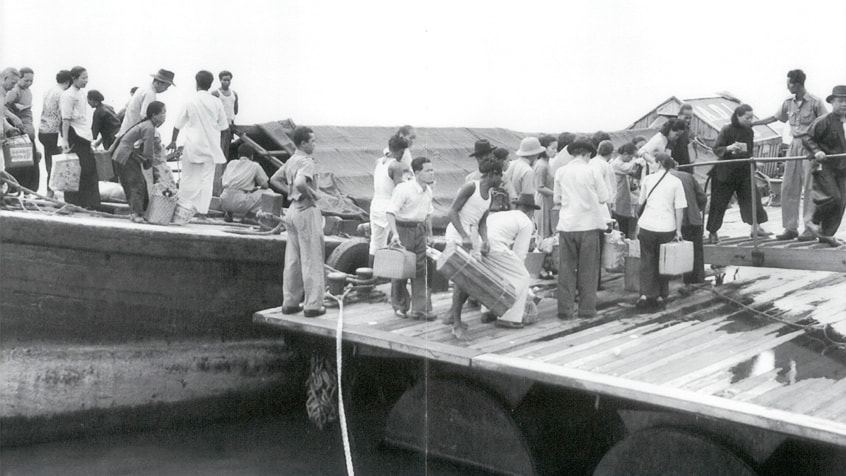
The arrival of immigrants by boat in 1951
1940: Japan attacked Malaya in 1941 and the Japanese had taken control of both Malaya and Singapore by 1942. Singapore suffered greatly during the war from the Japanese attack and then from Allied bombings of its harbour facilities. By the end of the war, the colony was in poor shape.
During the Japanese occupation, a favourable view of the colonial relationship had lapsed among the local population. Upon return of the British, it resulted in demands for self-rule. Hence, separate immigration establishments were created for Malaya and Singapore after the second World War, under the British government in 1946.
During the Japanese occupation, a favourable view of the colonial relationship had lapsed among the local population. Upon return of the British, it resulted in demands for self-rule. Hence, separate immigration establishments were created for Malaya and Singapore after the second World War, under the British government in 1946.
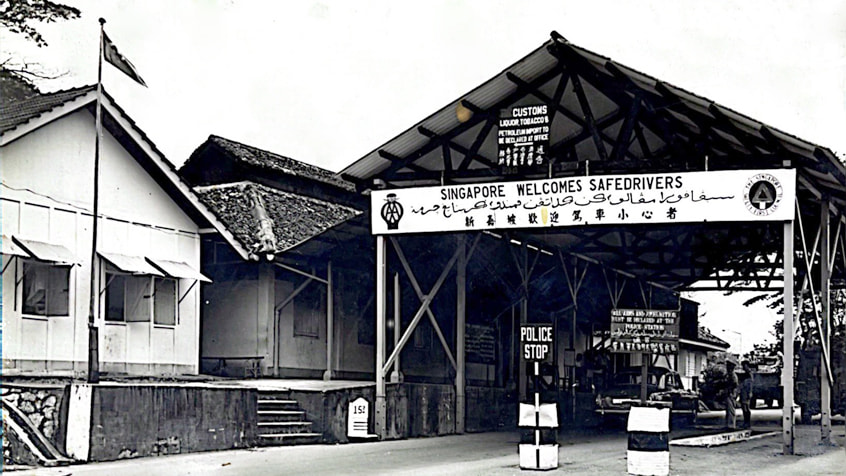
Woodlands Customs checkpoint in 1966
1966: After Singapore gained independence, there was a need to secure its borders further. Border control was introduced at both ends of the Johor Causeway, and the Causeway was widened to ease traffic congestion. All persons entering Singapore by road or rail were checked at Woodland's Customs checkpoint and Keppel Rail (more commonly known as Tanjong Pagar Railway Station) respectively. This acted as an immigration barrier from Malaysia when Singapore began the issuance of its restricted passports.
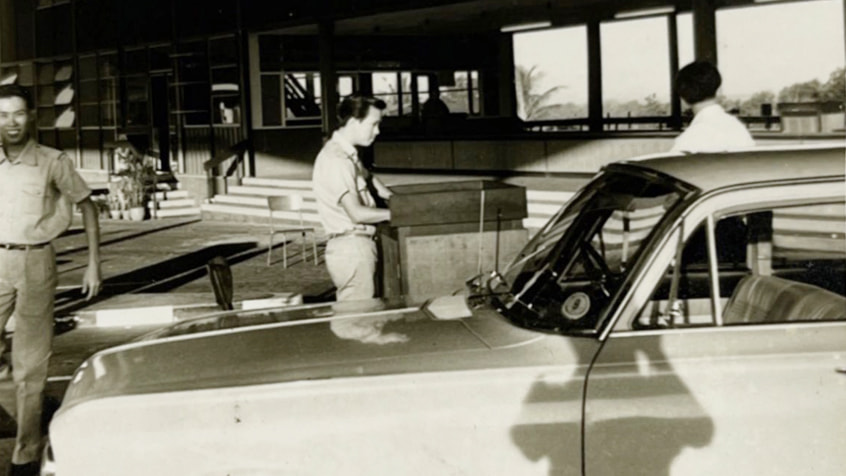
Immigration counter for car clearance in 1968
1966: After Singapore gained independence, there was a need to secure its borders further. Border control was introduced at both ends of the Johor Causeway, and the Causeway was widened to ease traffic congestion. All persons entering Singapore by road or rail were checked at Woodland's Customs checkpoint and Keppel Rail (more commonly known as Tanjong Pagar Railway Station) respectively. This acted as an immigration barrier from Malaysia when Singapore began the issuance of its restricted passports.
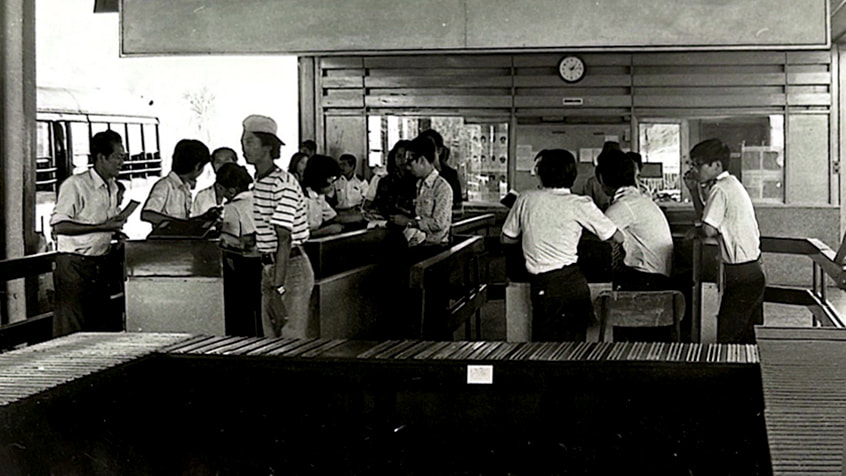
Immigration counters at bus hall in 1968
1966: After Singapore gained independence, there was a need to secure its borders further. Border control was introduced at both ends of the Johor Causeway, and the Causeway was widened to ease traffic congestion. All persons entering Singapore by road or rail were checked at Woodland's Customs checkpoint and Keppel Rail (more commonly known as Tanjong Pagar Railway Station) respectively. This acted as an immigration barrier from Malaysia when Singapore began the issuance of its restricted passports.
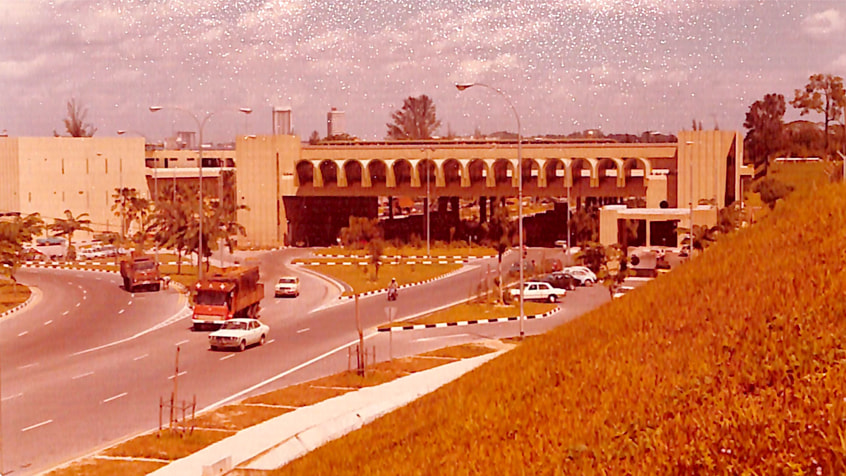
OWC in 1977
1977: The Old Woodlands Checkpoint (OWC) was built in 1977 to manage increasing traffic flow between Singapore and Malaysia. OWC served to clear all other modes of land traffic other than rail.
With the opening of more checkpoints, exit control was implemented in 1978 for foreign visitors, ensuring the safety and security of Singapore would remain uncompromised by preventing visitors from overstaying in Singapore illegally.
With the opening of more checkpoints, exit control was implemented in 1978 for foreign visitors, ensuring the safety and security of Singapore would remain uncompromised by preventing visitors from overstaying in Singapore illegally.
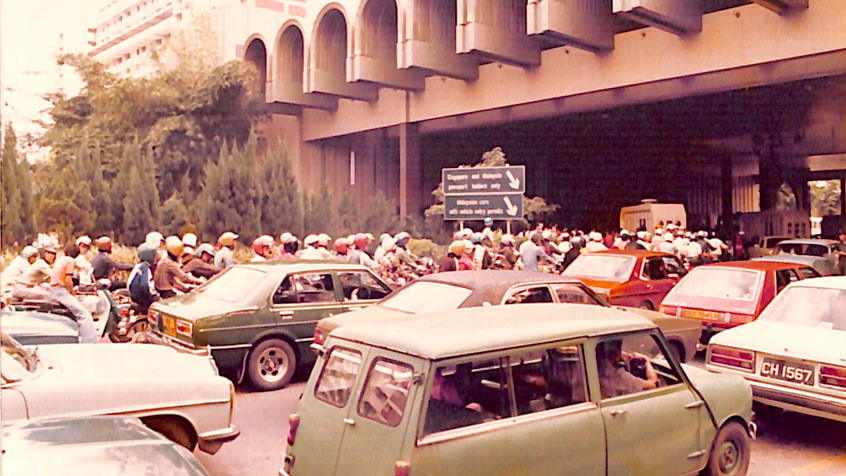
Entrance to OWC in 1977
1977: The Old Woodlands Checkpoint (OWC) was built in 1977 to manage increasing traffic flow between Singapore and Malaysia. OWC served to clear all other modes of land traffic other than rail.
With the opening of more checkpoints, exit control was implemented in 1978 for foreign visitors, ensuring the safety and security of Singapore would remain uncompromised by preventing visitors from overstaying in Singapore illegally.
With the opening of more checkpoints, exit control was implemented in 1978 for foreign visitors, ensuring the safety and security of Singapore would remain uncompromised by preventing visitors from overstaying in Singapore illegally.
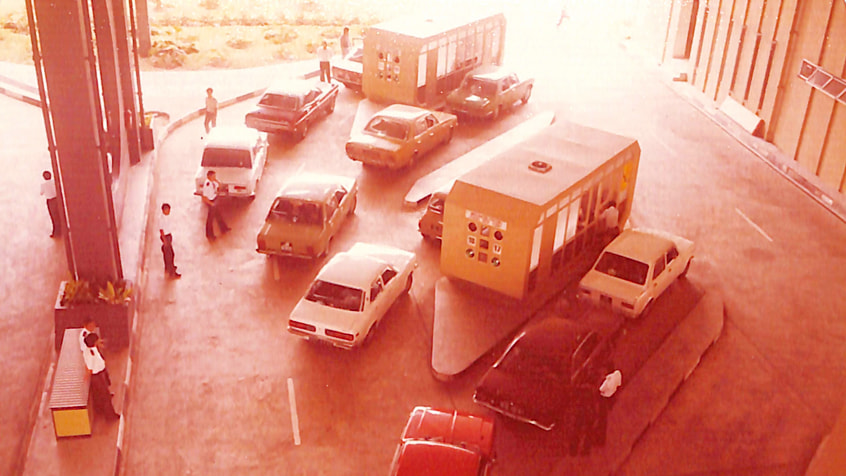
Immigration counter for car clearance in 1977
1977: The Old Woodlands Checkpoint (OWC) was built in 1977 to manage increasing traffic flow between Singapore and Malaysia. OWC served to clear all other modes of land traffic other than rail.
With the opening of more checkpoints, exit control was implemented in 1978 for foreign visitors, ensuring the safety and security of Singapore would remain uncompromised by preventing visitors from overstaying in Singapore illegally.
With the opening of more checkpoints, exit control was implemented in 1978 for foreign visitors, ensuring the safety and security of Singapore would remain uncompromised by preventing visitors from overstaying in Singapore illegally.
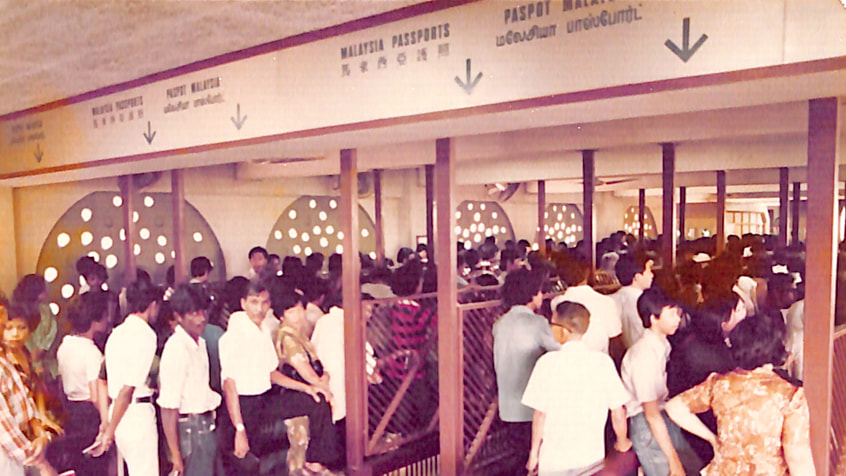
Immigration counters at bus hall in 1977
1977: The Old Woodlands Checkpoint (OWC) was built in 1977 to manage increasing traffic flow between Singapore and Malaysia. OWC served to clear all other modes of land traffic other than rail.
With the opening of more checkpoints, exit control was implemented in 1978 for foreign visitors, ensuring the safety and security of Singapore would remain uncompromised by preventing visitors from overstaying in Singapore illegally.
With the opening of more checkpoints, exit control was implemented in 1978 for foreign visitors, ensuring the safety and security of Singapore would remain uncompromised by preventing visitors from overstaying in Singapore illegally.
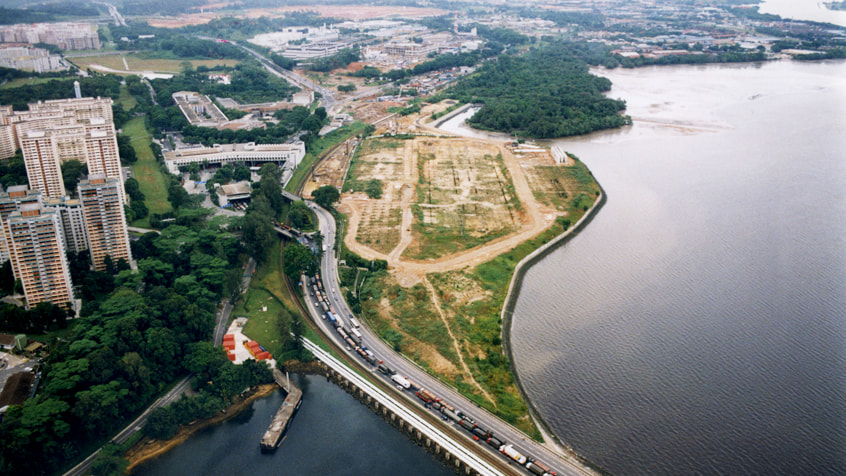
1980: During post-independence, the Woodlands Causeway became increasingly congested due to growing cross-strait traffic. Although the Causeway was widened in 1976 from four to six-lane carriageway, commuters and motorists continued to face congestion, especially during peak hours.
Singapore and Malaysia considered and agreed on a second crossing in 1980 to address the problem. Named as the Second Link today, the official agreement to design, build and maintain was signed by both countries in March 1994.
Singapore and Malaysia considered and agreed on a second crossing in 1980 to address the problem. Named as the Second Link today, the official agreement to design, build and maintain was signed by both countries in March 1994.
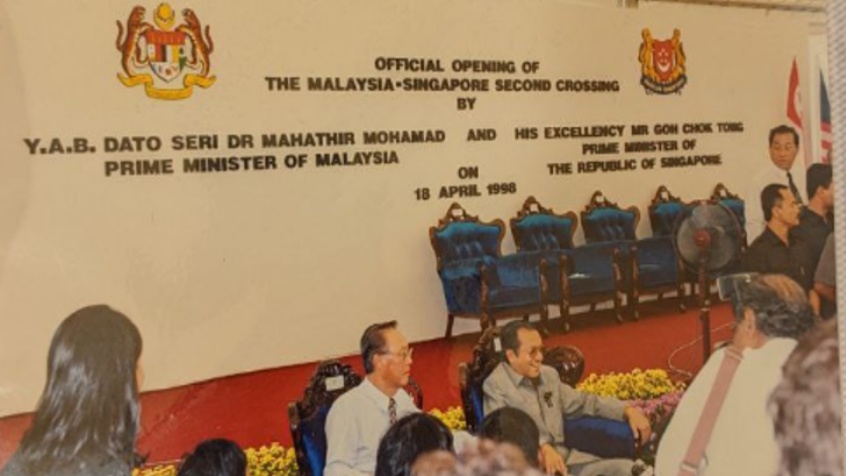
Opening ceremony of Tuas Checkpoint and Second Link
1998: Tuas Checkpoint and Second Link officially opened. As Singapore's second crossing between Singapore and Malaysia, it provided a good alternative for trade vehicles carrying industrial goods and produce intended for our industries or our ports. The crossing is also more conveniently located in terms of access to North-South highway and Singapore's industrial sector and ports.
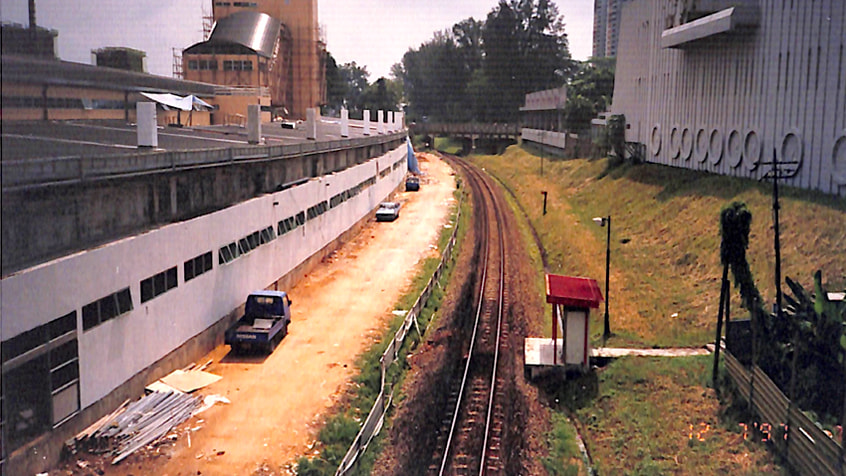
The construction of Woodlands Train Checkpoint
1998: In the same year, Singapore's rail Customs, Immigration and Quarantine (CIQ) facilities was relocated from Tanjong Pagar to Woodlands Train Checkpoint, which is located next to the existing Woodlands Checkpoint while Malaysia Immigration and Customs officials remained in Tanjong Pagar Railway Station. The decision for relocation was to centralise immigration, customs and security clearance for all land traffic, including rail traffic into Singapore at Woodlands Checkpoint. This move was to prevent illegal entries of people and goods, smuggling of drugs along the railway line and to ensure that the immigration and customs staff could be fully utilised during the lull periods between train arrivals and departures.
The co-located Singapore and Malaysia CIQ facility at Woodlands Train Checkpoint was officially opened in 2011. This symbolised the close people-to-people links between Singapore and Malaysia, and opened up new possibilities for bilateral cooperation between both countries.
The co-located Singapore and Malaysia CIQ facility at Woodlands Train Checkpoint was officially opened in 2011. This symbolised the close people-to-people links between Singapore and Malaysia, and opened up new possibilities for bilateral cooperation between both countries.
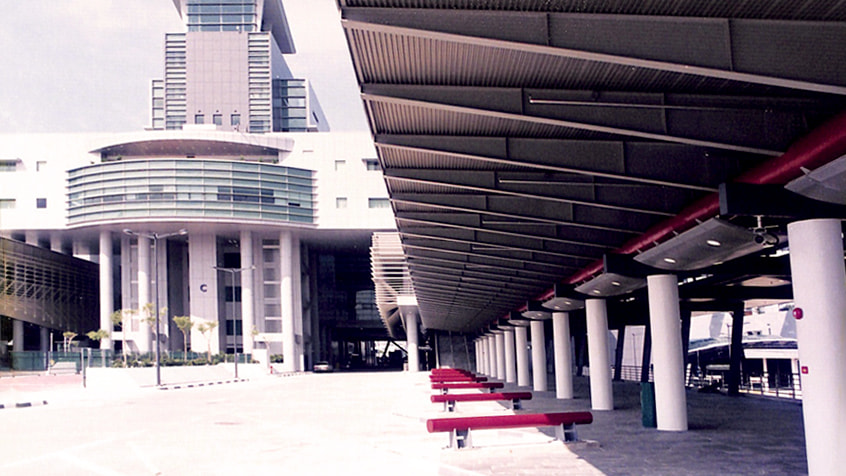
1999: Existing Woodlands Checkpoint was opened in 1999 to replace OWC, which was then decommissioned in 2000.
Clearance of containers at Tuas and Woodlands Checkpoints became paperless. An electronic filing facility for bulk transfer of baggage belonging to flight and cruise tour groups was launched.
Clearance of containers at Tuas and Woodlands Checkpoints became paperless. An electronic filing facility for bulk transfer of baggage belonging to flight and cruise tour groups was launched.
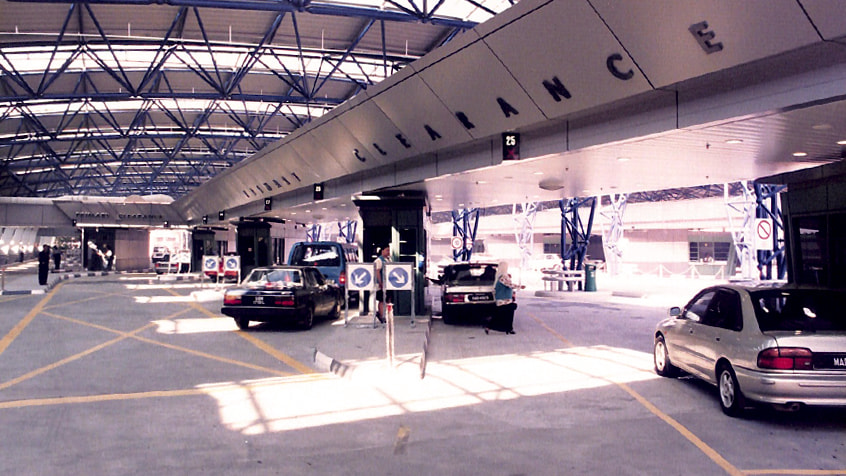
1999: Existing Woodlands Checkpoint was opened in 1999 to replace OWC, which was then decommissioned in 2000.
Clearance of containers at Tuas and Woodlands Checkpoints became paperless. An electronic filing facility for bulk transfer of baggage belonging to flight and cruise tour groups was launched.
Clearance of containers at Tuas and Woodlands Checkpoints became paperless. An electronic filing facility for bulk transfer of baggage belonging to flight and cruise tour groups was launched.
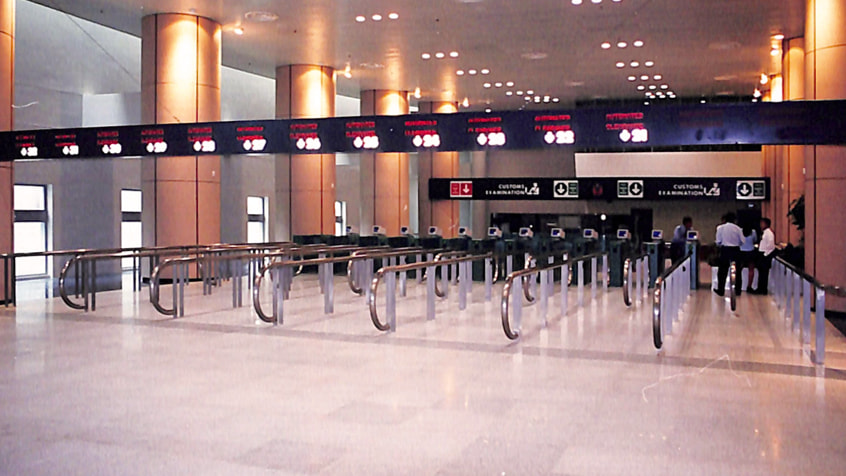
1999: Existing Woodlands Checkpoint was opened in 1999 to replace OWC, which was then decommissioned in 2000.
Clearance of containers at Tuas and Woodlands Checkpoints became paperless. An electronic filing facility for bulk transfer of baggage belonging to flight and cruise tour groups was launched.
Clearance of containers at Tuas and Woodlands Checkpoints became paperless. An electronic filing facility for bulk transfer of baggage belonging to flight and cruise tour groups was launched.
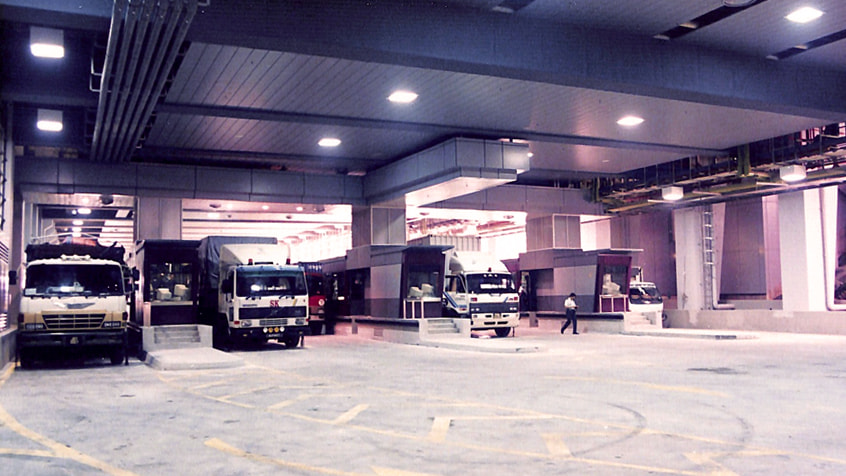
1999: Existing Woodlands Checkpoint was opened in 1999 to replace OWC, which was then decommissioned in 2000.
Clearance of containers at Tuas and Woodlands Checkpoints became paperless. An electronic filing facility for bulk transfer of baggage belonging to flight and cruise tour groups was launched.
Clearance of containers at Tuas and Woodlands Checkpoints became paperless. An electronic filing facility for bulk transfer of baggage belonging to flight and cruise tour groups was launched.
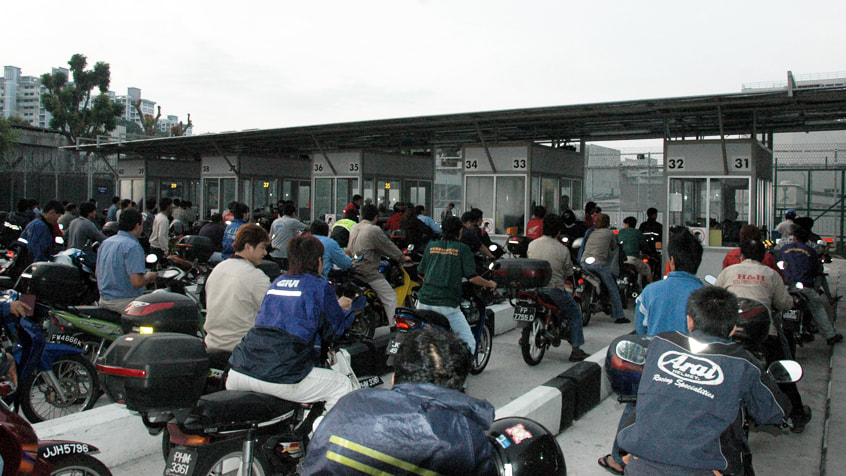
2007: New Woodlands Mini-Checkpoint, consisting of ten immigration counters built on the strip of land located between the NWC and OWC was operationalised. It was used during the morning peak hours to clear motorcycles and improve traffic management at Woodlands Checkpoint.
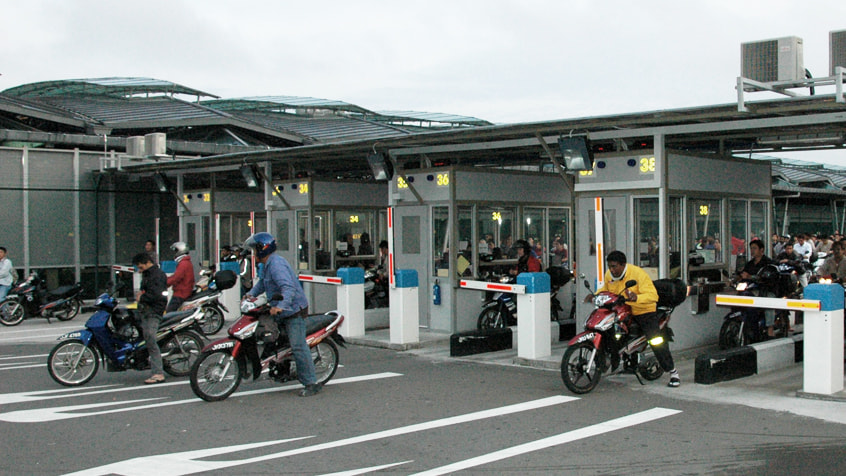
2007: New Woodlands Mini-Checkpoint, consisting of ten immigration counters built on the strip of land located between the NWC and OWC was operationalised. It was used during the morning peak hours to clear motorcycles and improve traffic management at Woodlands Checkpoint.
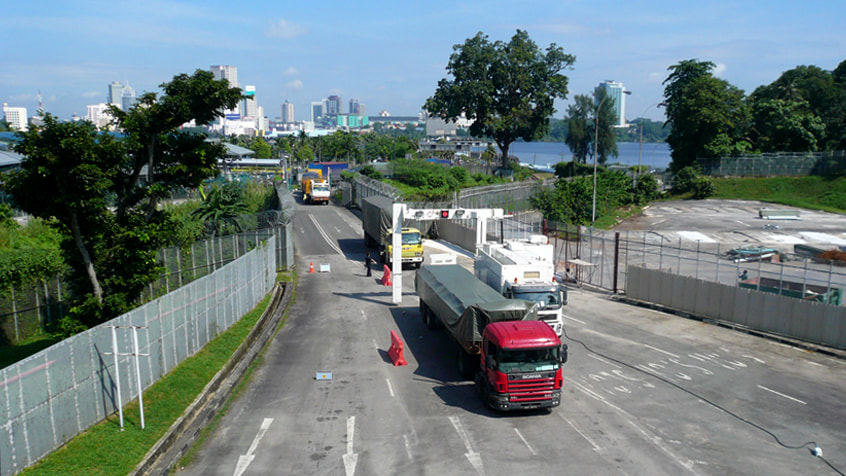
2008: Earlier decommissioned in 2000, the OWC was re-gazetted and reopened for lorries, motorcycles and car clearances at different times of the day. This supplemented the clearance capacity at the New Woodlands Checkpoint (NWC) due to growing cross-border traffic at land checkpoints.
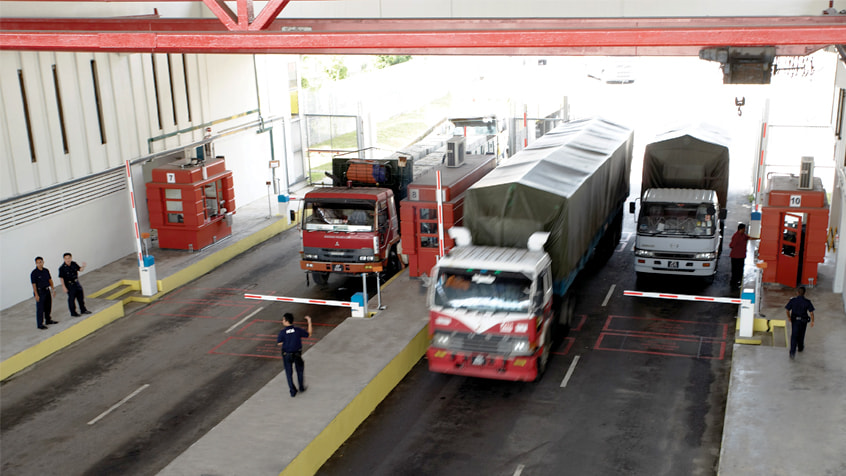
2008: Earlier decommissioned in 2002, the OWC was re-gazetted and reopened for lorries, motorcycles and car clearances at different times of the day. This supplemented the clearance capacity at the New Woodlands Checkpoint (NWC) due to growing cross-border traffic at land checkpoints.
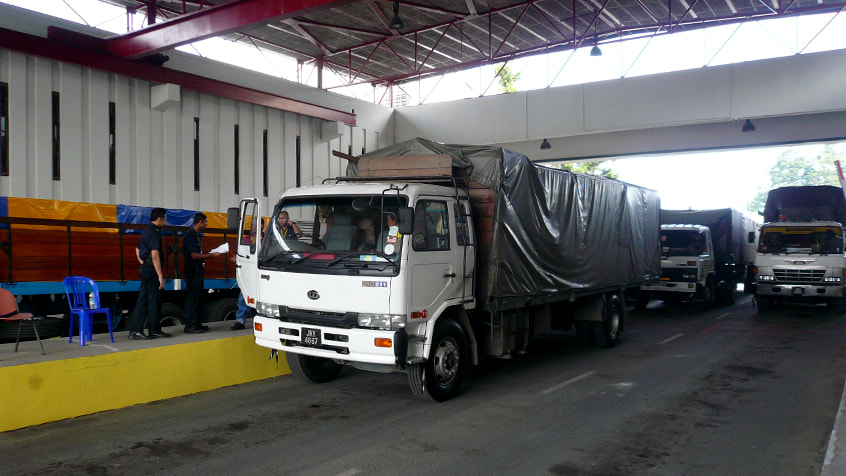
2008: Earlier decommissioned in 2002, the OWC was re-gazetted and reopened for lorries, motorcycles and car clearances at different times of the day. This supplemented the clearance capacity at the New Woodlands Checkpoint (NWC) due to growing cross-border traffic at land checkpoints.
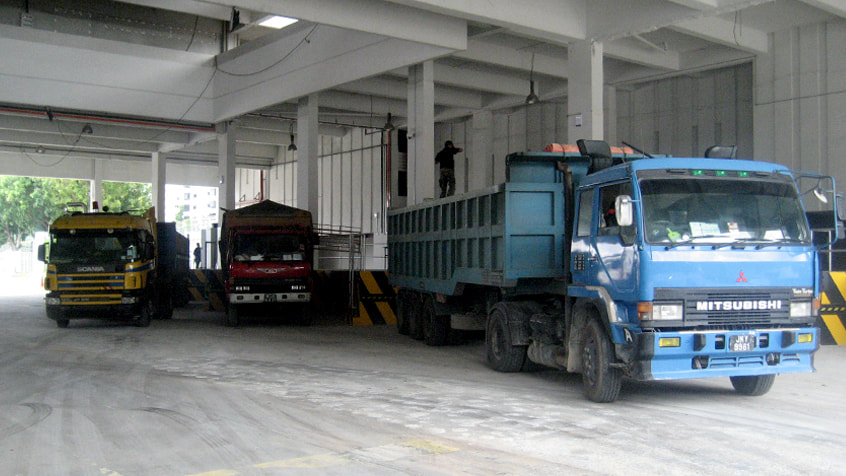
2008: Earlier decommissioned in 2002, the OWC was re-gazetted and reopened for lorries, motorcycles and car clearances at different times of the day. This supplemented the clearance capacity at the New Woodlands Checkpoint (NWC) due to growing cross-border traffic at land checkpoints.
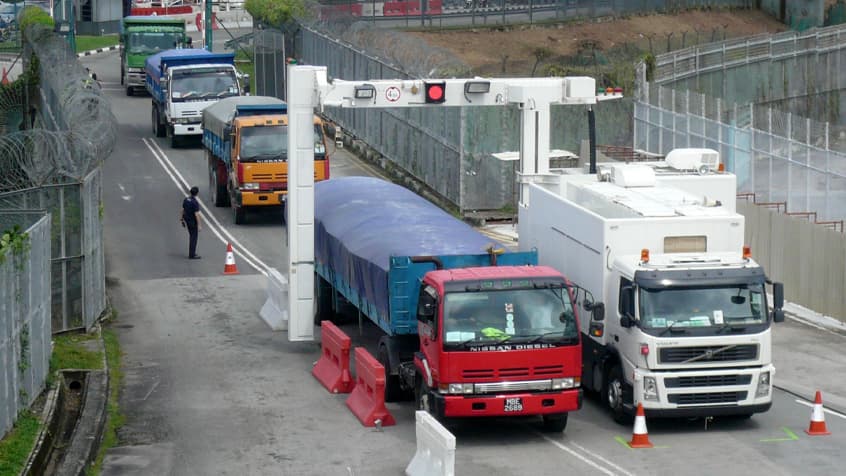
2010: A Cargo Clearance Centre (CCC) incoporating an Image Analysis Centre (IAC) was built at the OWC to mirror the operational capability of the existing CCC at Woodlands Checkpoint. This enhanced the capabilities of the OWC further. The new CCC comprised a cargo checking bay with six dedicated checking platforms. The specialists working at the IAC would receive images for analysis from the mobile radiographic scanner. This facility became operational on 1 February.
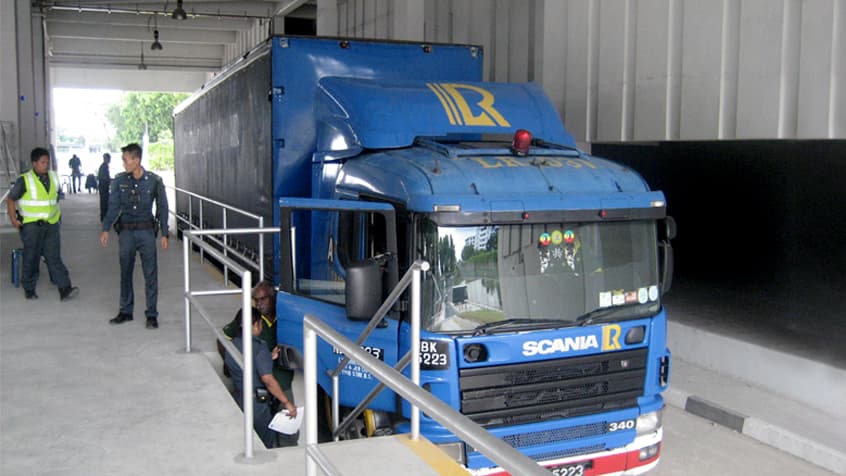
2010: A Cargo Clearance Centre (CCC) incoporating an Image Analysis Centre (IAC) was built at the OWC to mirror the operational capability of the existing CCC at Woodlands Checkpoint. This enhanced the capabilities of the OWC further. The new CCC comprised a cargo checking bay with six dedicated checking platforms. The specialists working at the IAC would receive images for analysis from the mobile radiographic scanner. This facility became operational on 1 February.
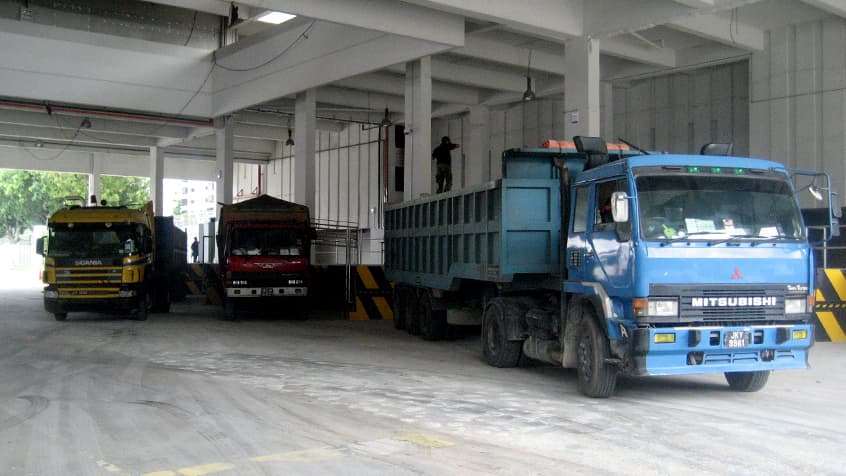
2010: A Cargo Clearance Centre (CCC) incoporating an Image Analysis Centre (IAC) was built at the OWC to mirror the operational capability of the existing CCC at Woodlands Checkpoint. This enhanced the capabilities of the OWC further. The new CCC comprised a cargo checking bay with six dedicated checking platforms. The specialists working at the IAC would receive images for analysis from the mobile radiographic scanner. This facility became operational on 1 February.
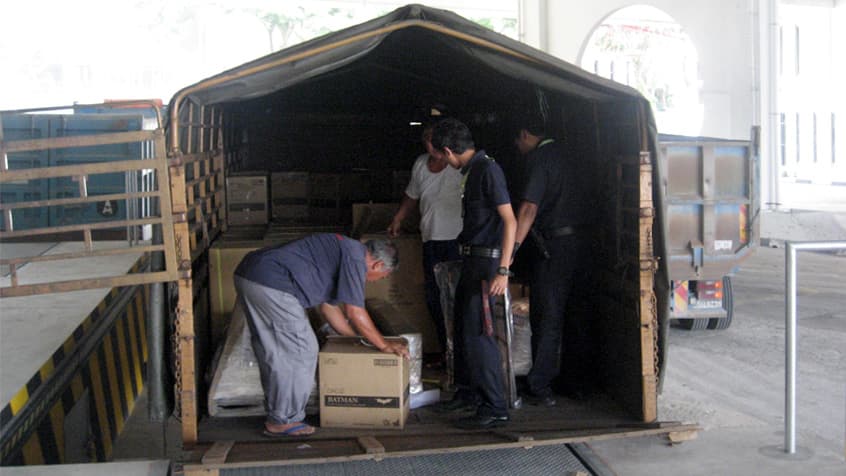
2010: A Cargo Clearance Centre (CCC) incoporating an Image Analysis Centre (IAC) was built at the OWC to mirror the operational capability of the existing CCC at Woodlands Checkpoint. This enhanced the capabilities of the OWC further. The new CCC comprised a cargo checking bay with six dedicated checking platforms. The specialists working at the IAC would receive images for analysis from the mobile radiographic scanner. This facility became operational on 1 February.
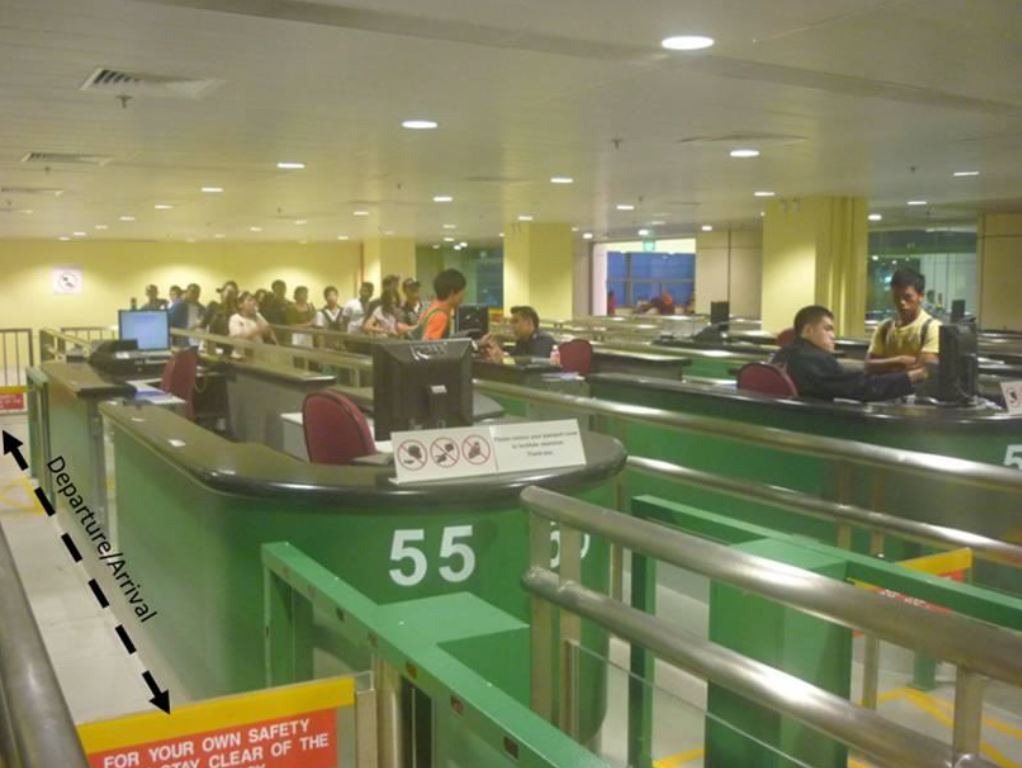
2011: On 4 August, the Flexi Bus Hall was opened for operation at Woodlands Checkpoint. The Flexi Bus Hall was used to clear either arrival or departure travellers, depending on travellers volume during the peak periods.
In the same year, the new car exit lane at Woodlands Checkpoint was operationalised on 19 September, facilitating the flow of cars out of the checkpoint during peak hours.
In the same year, the new car exit lane at Woodlands Checkpoint was operationalised on 19 September, facilitating the flow of cars out of the checkpoint during peak hours.

2017: ICA and SLA jointly announced that an extension of Woodlands Checkpoint would be built at the Old Woodlands Town Centre (OTWC). The aim of expanding Woodlands Checkpoint is to better alleviate traffic congestion and future-proof it for the projected increase in traffic volume. In a separate announcement in 2022, ICA said that there is no timeline yet for this project but it is estimated that it will take 10 to 15 years.
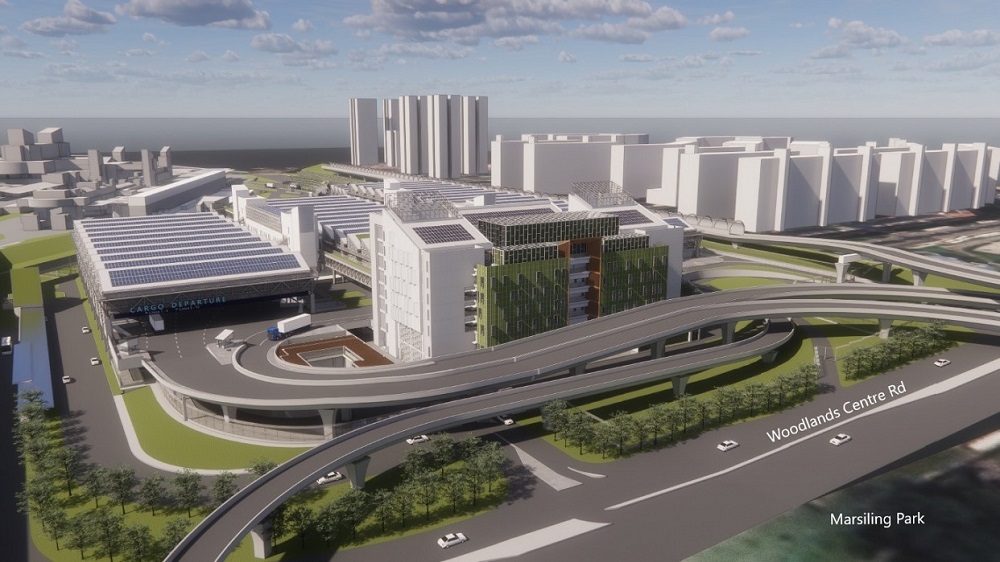
Artist’s impression of Old Woodlands Town Centre Extension
2024: Update on Woodlands Checkpoint redevelopment
It was announced in January 2024 that Phase 1 of the Woodlands Checkpoint (WCP) redevelopment will commence in 2025. Under Phase 1, ICA will build an extension at the Old Woodlands Town Centre (OWTC), constructing 21 bi-directional cargo lanes and 78 arrival car lanes, increasing clearance capacity by 30% and 95% respectively. The BKE will be extended to create a direct route for vehicles exiting WCP to access the BKE, to reduce traffic congestion on the local roads. These extensions would be completed progressively from 2028.
Air Checkpoints
1931
1955
1929
1990
1981
2007
2012
2017
2019
2021
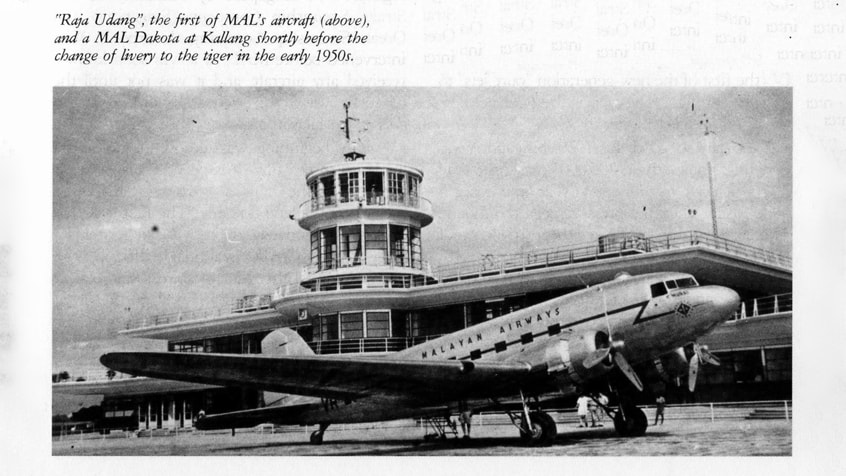
1931: The construction of Kallang Airport began in 1931.
In 1935, Kallang Airport received its first unofficial aircraft two years before the official opening - a hawker Osprey from the aircraft carrier HMS Hermes. The aircraft had made an emergency landing at Kallang after being caught in a storm.
Being Singapore's first purpose-built commercial airport, it was officially opened in June 1937 to cater to the rising number of air travellers.
In 1935, Kallang Airport received its first unofficial aircraft two years before the official opening - a hawker Osprey from the aircraft carrier HMS Hermes. The aircraft had made an emergency landing at Kallang after being caught in a storm.
Being Singapore's first purpose-built commercial airport, it was officially opened in June 1937 to cater to the rising number of air travellers.
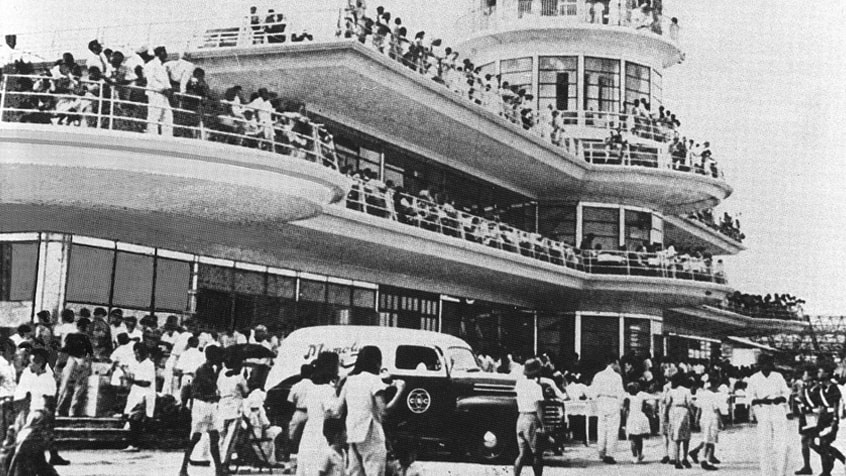
1931: The construction of Kallang Airport began in 1931.
In 1935, Kallang Airport received its first unofficial aircraft two years before the official opening - a hawker Osprey from the aircraft carrier HMS Hermes. The aircraft had made an emergency landing at Kallang after being caught in a storm.
Being Singapore's first purpose-built commercial airport, it was officially opened in June 1937 to cater to the rising number of air travellers.
In 1935, Kallang Airport received its first unofficial aircraft two years before the official opening - a hawker Osprey from the aircraft carrier HMS Hermes. The aircraft had made an emergency landing at Kallang after being caught in a storm.
Being Singapore's first purpose-built commercial airport, it was officially opened in June 1937 to cater to the rising number of air travellers.

1931: The construction of Kallang Airport began in 1931.
In 1935, Kallang Airport received its first unofficial aircraft two years before the official opening - a hawker Osprey from the aircraft carrier HMS Hermes. The aircraft had made an emergency landing at Kallang after being caught in a storm.
Being Singapore's first purpose-built commercial airport, it was officially opened in June 1937 to cater to the rising number of air travellers.
In 1935, Kallang Airport received its first unofficial aircraft two years before the official opening - a hawker Osprey from the aircraft carrier HMS Hermes. The aircraft had made an emergency landing at Kallang after being caught in a storm.
Being Singapore's first purpose-built commercial airport, it was officially opened in June 1937 to cater to the rising number of air travellers.
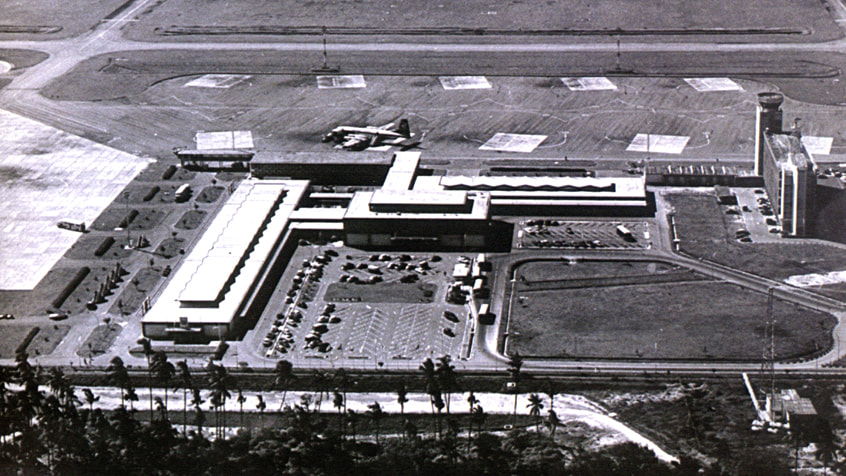
1955: After the Second World War, the Ordinance No. 5 of 1952 (The Immigration Ordinance) came into force on 1 August and became the principles of our modern-day immigration rules, regulations and policies.
As the popularity of air travel increased, passenger arrivals soon outstripped the capacity of Kallang Airport. Paya Lebar Airport was officially opened to replace Kallang Airport to cope with the demand in 1955.
Paya Lebar Airport, with its single runway, served as Singapore's commercial international airport for 26 years until 1981, when it was converted to a military airbase under the Singapore Air Force.
As the popularity of air travel increased, passenger arrivals soon outstripped the capacity of Kallang Airport. Paya Lebar Airport was officially opened to replace Kallang Airport to cope with the demand in 1955.
Paya Lebar Airport, with its single runway, served as Singapore's commercial international airport for 26 years until 1981, when it was converted to a military airbase under the Singapore Air Force.
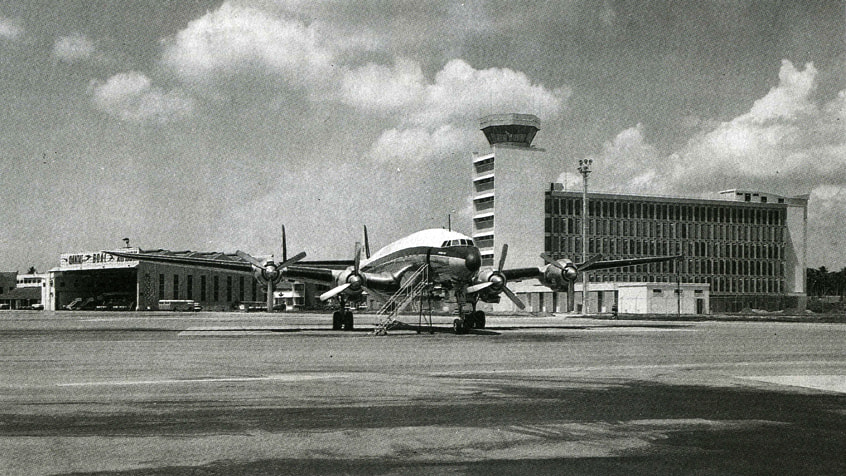
1955: After the Second World War, the Ordinance No. 5 of 1952 (The Immigration Ordinance) came into force on 1 August and became the principles of our modern-day immigration rules, regulations and policies.
As the popularity of air travel increased, passenger arrivals soon outstripped the capacity of Kallang Airport. Paya Lebar Airport was officially opened to replace Kallang Airport to cope with the demand in 1955.
Paya Lebar Airport, with its single runway, served as Singapore's commercial international airport for 26 years until 1981, when it was converted to a military airbase under the Singapore Air Force.
As the popularity of air travel increased, passenger arrivals soon outstripped the capacity of Kallang Airport. Paya Lebar Airport was officially opened to replace Kallang Airport to cope with the demand in 1955.
Paya Lebar Airport, with its single runway, served as Singapore's commercial international airport for 26 years until 1981, when it was converted to a military airbase under the Singapore Air Force.
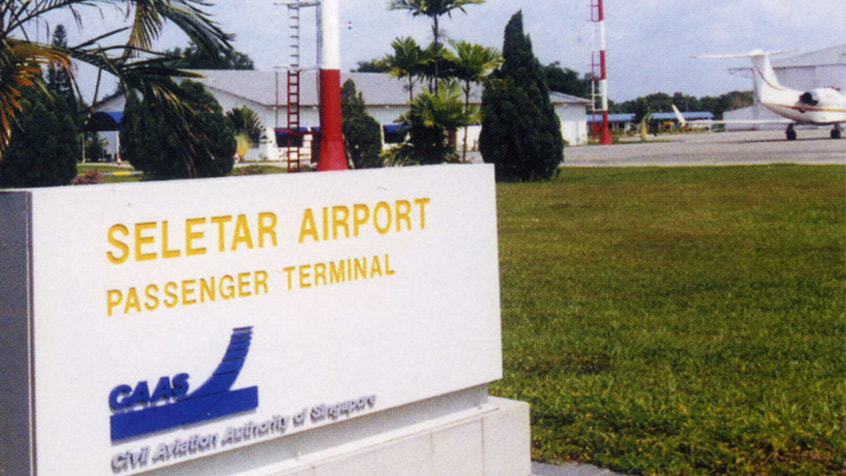
1929: One of the first checkpoints was Seletar Airport, completed in 1929. With the introduction of the Immigration Restriction Order, the era of free immigration ended. This also marked the start of more commercial flights. Previously serving as a military base, Seletar Airport received its first commercial flight - a Dutch East Indies Airways plane carrying eight passengers from Jakarta in 1930.

1929: One of the first checkpoints was Seletar Airport, completed in 1929. With the introduction of the Immigration Restriction Order, the era of free immigration ended. This also marked the start of more commercial flights. Previously serving as a military base, Seletar Airport received its first commercial flight - a Dutch East Indies Airways plane carrying eight passengers from Jakarta in 1930.
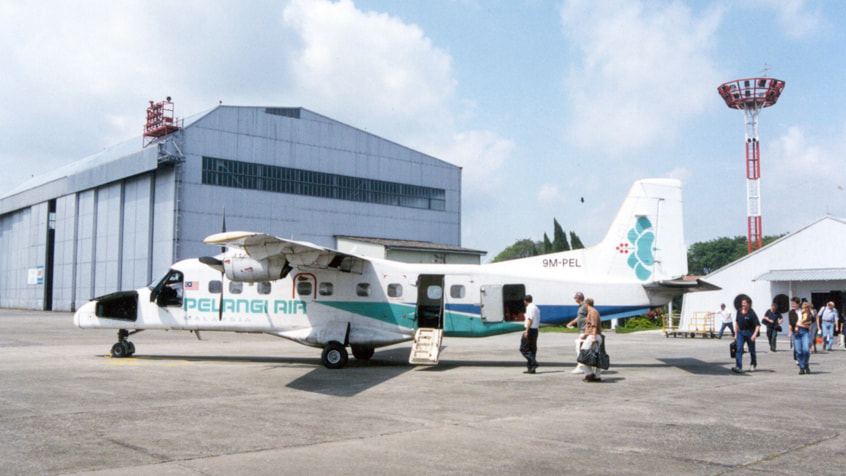
1929: One of the first checkpoints was Seletar Airport, completed in 1929. With the introduction of the Immigration Restriction Order, the era of free immigration ended. This also marked the start of more commercial flights. Previously serving as a military base, Seletar Airport received its first commercial flight - a Dutch East Indies Airways plane carrying eight passengers from Jakarta in 1930.
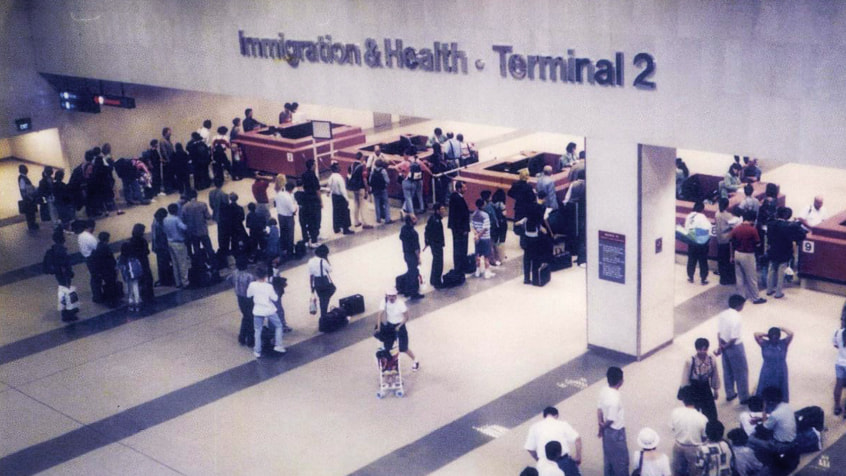
1990: Again, to cope with increased air passenger traffic, Terminal 2 was opened in November. The Red and Green Channel System of clearing incoming travellers was successfully implemented at Singapore Changi Airport in 1991. This dramatically sped up the clearance of incoming visitors.
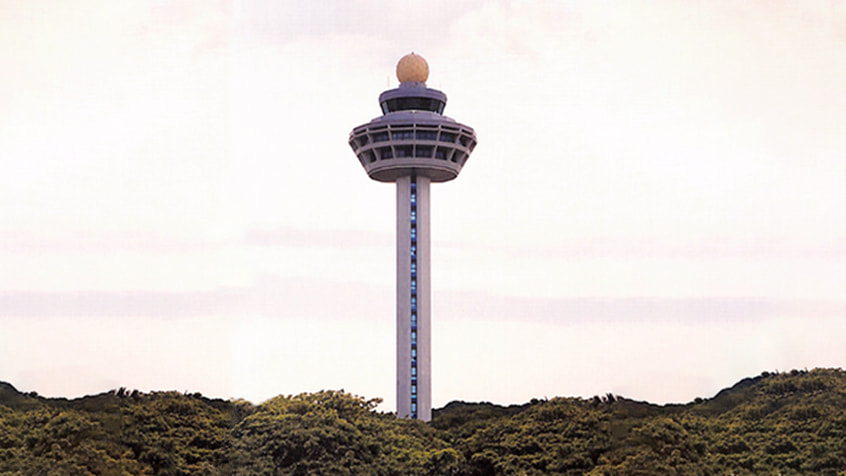
1981: By mid-1970s, it was clear that Paya Lebar Airport was unable to cope with the increasing traffic. A bigger airport was needed, hence, the opening of Changi Airport in 1981. Changi Airport began operations with just one terminal and one runway. A second runway was completed two years later.
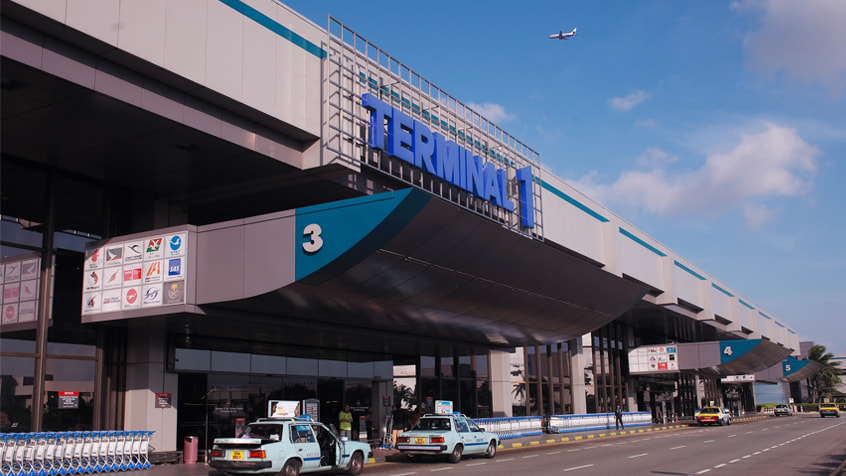
1981: By mid-1970s, it was clear that Paya Lebar Airport was unable to cope with the increasing traffic. A bigger airport was needed, hence, the opening of Changi Airport in 1981. Changi Airport began operations with just one terminal and one runway. A second runway was completed two years later.
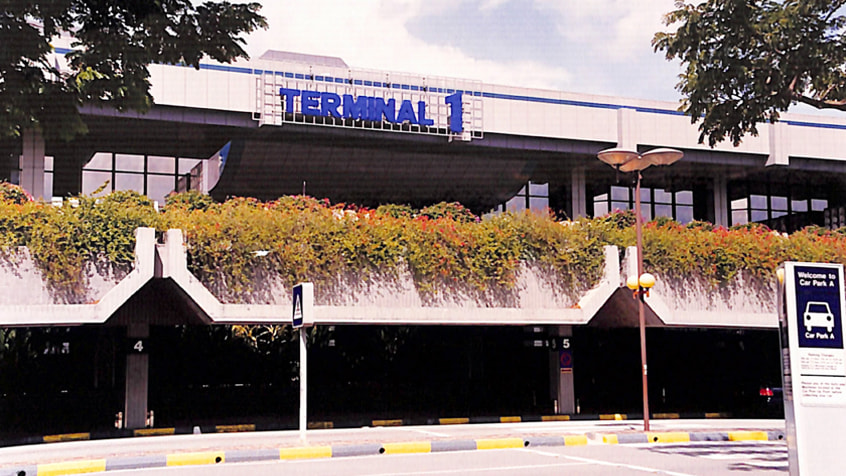
1981: By mid-1970s, it was clear that Paya Lebar Airport was unable to cope with the increasing traffic. A bigger airport was needed, hence, the opening of Changi Airport in 1981. Changi Airport began operations with just one terminal and one runway. A second runway was completed two years later.
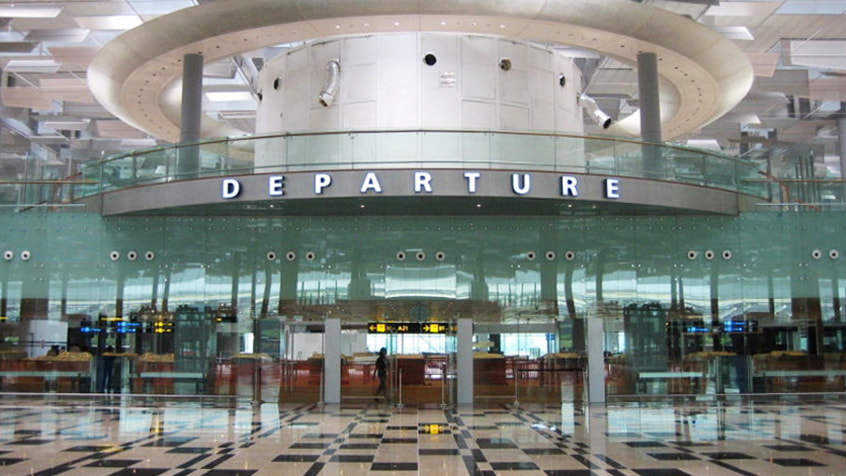
2007: In a span of about two decades, Changi Airport expanded with Terminal 3, which began operations on 1 January.
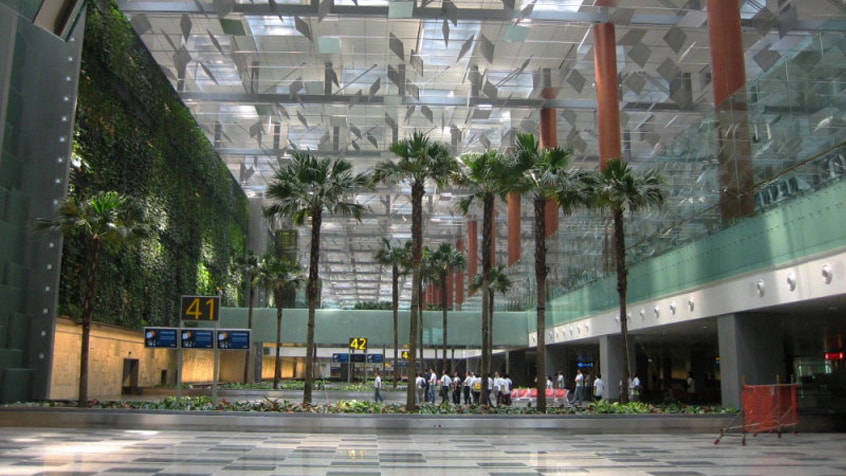
2007: In a span of about two decades, Changi Airport expanded with Terminal 3, which began operations on 1 January.
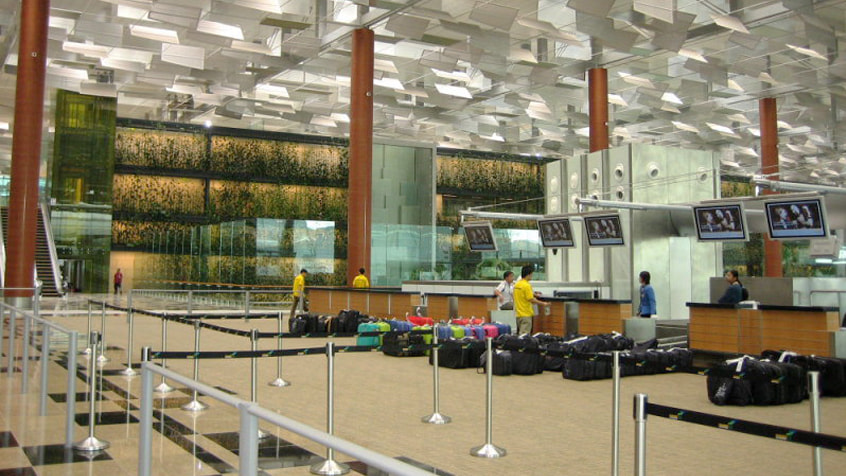
2007: In a span of about two decades, Changi Airport expanded with Terminal 3, which began operations on 1 January.
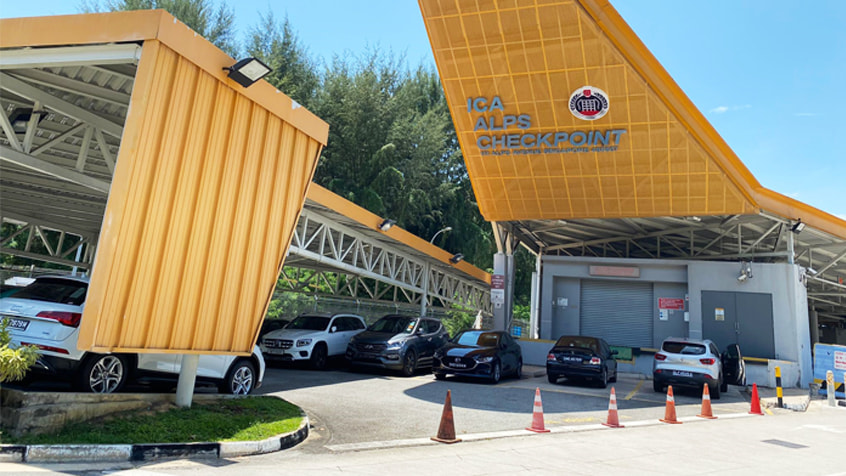
2012: To improve border security and the competitiveness of the Air Cargo Logistics Hub, the infrastructure at the Airport Logistics Park of Singapore (ALPS) Checkpoint was enhanced with the installation of a Radiographic Scanning Portal (RSP). With the RSP installation, all cargo-laden conveyances leaving Changi FTZ through ALPS Checkpoint were subjected to radiographic scanning before arriving at the Primary Clearance Booths for clearance.
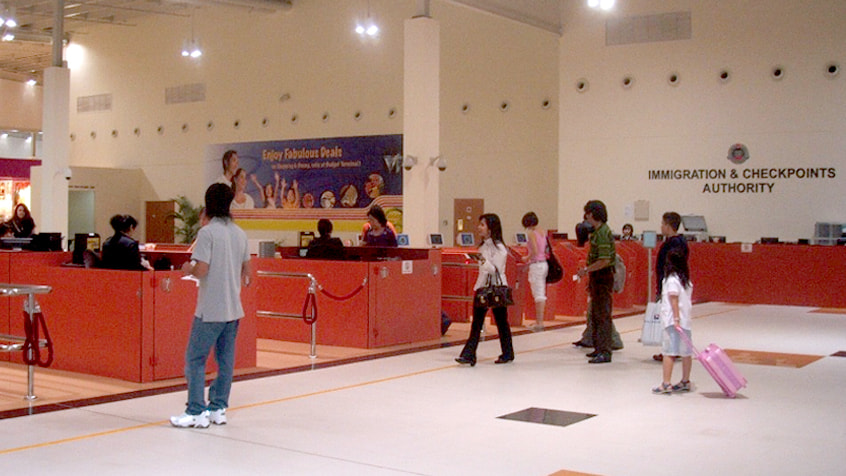
Arrival hall of Budget Terminal on 2006
2017: Changi Airport Terminal 4
Budget Terminal commenced operations in 2006 in response to the increasing trend of low-cost travel in the region. However, it was closed in 2012 to construct Terminal 4, which opened in 2017.
Budget Terminal commenced operations in 2006 in response to the increasing trend of low-cost travel in the region. However, it was closed in 2012 to construct Terminal 4, which opened in 2017.
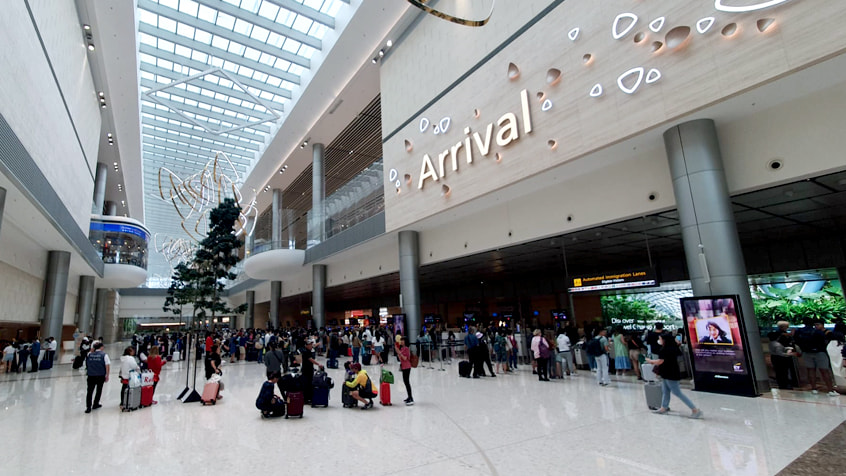
Arrival Hall of Terminal 4 in 2017
2017: Changi Airport Terminal 4
Budget Terminal commenced operations in 2006 in response to the increasing trend of low-cost travel in the region. However, it was closed in 2012 to construct Terminal 4, which opened in 2017.
Budget Terminal commenced operations in 2006 in response to the increasing trend of low-cost travel in the region. However, it was closed in 2012 to construct Terminal 4, which opened in 2017.
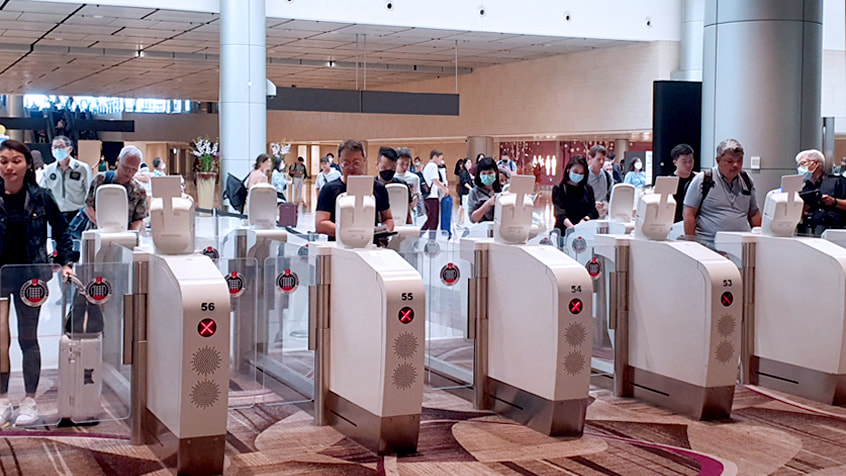
Arrival Hall of Terminal 4 in 2017
2017: Changi Airport Terminal 4
Budget Terminal commenced operations in 2006 in response to the increasing trend of low-cost travel in the region. However, it was closed in 2012 to construct Terminal 4, which opened in 2017.
Budget Terminal commenced operations in 2006 in response to the increasing trend of low-cost travel in the region. However, it was closed in 2012 to construct Terminal 4, which opened in 2017.
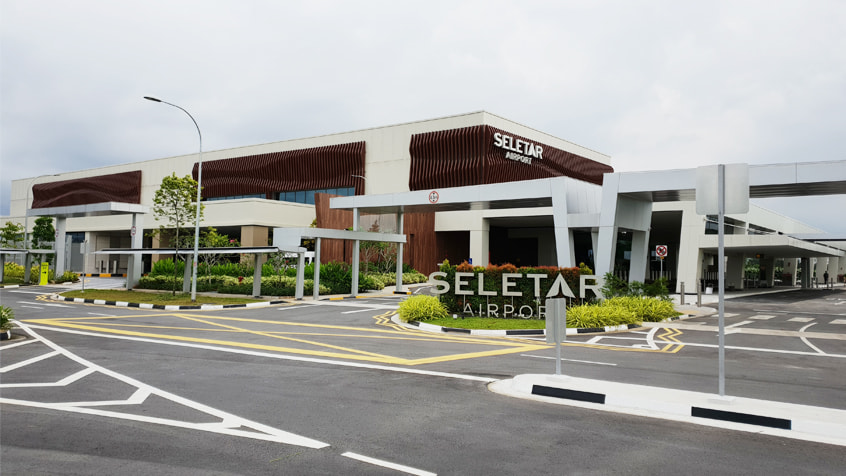
2019: On 21 April, a new passenger terminal at Seletar Airport welcomed its first commercial flight when Firefly Flight FY3126 from Subang, Malaysia landed. The two-storey new Passenger Terminal Building (SAPTB), which includes a Business Aviation Centre (BAC), is equipped to handle 700,000 passengers a year and receives all scheduled turboprop flights arriving in Singapore. The BAC serves passengers travelling on chartered business flights and private jets.
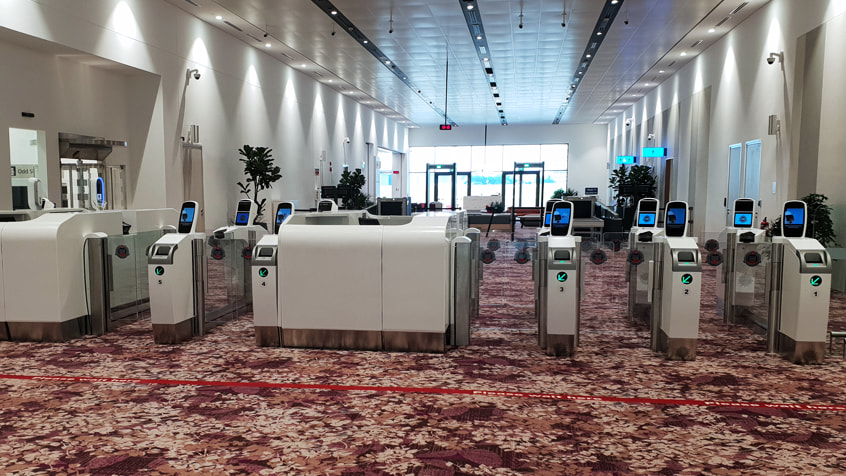
2019: On 21 April, a new passenger terminal at Seletar Airport welcomed its first commercial flight when Firefly Flight FY3126 from Subang, Malaysia landed. The two-storey new Passenger Terminal Building (SAPTB), which includes a Business Aviation Centre (BAC), is equipped to handle 700,000 passengers a year and receives all scheduled turboprop flights arriving in Singapore. The BAC serves passengers travelling on chartered business flights and private jets.
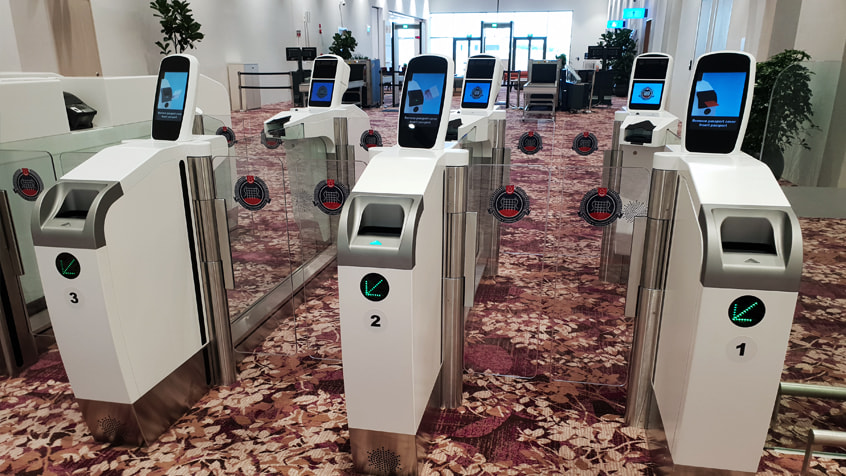
2019: On 21 April, a new passenger terminal at Seletar Airport welcomed its first commercial flight when Firefly Flight FY3126 from Subang, Malaysia landed. The two-storey new Passenger Terminal Building (SAPTB), which includes a Business Aviation Centre (BAC), is equipped to handle 700,000 passengers a year and receives all scheduled turboprop flights arriving in Singapore. The BAC serves passengers travelling on chartered business flights and private jets.
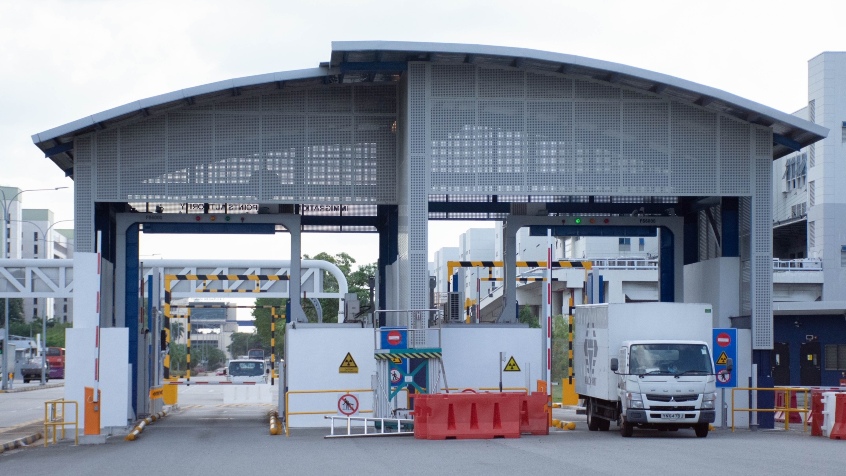
2021: To streamline paper-based clearance processes that had been in place since the 1990s, Air Cargo Command leveraged technology to implement paperless import clearance for the Air Express Companies (AECs). During cargo clearance, officers access soft-copy permits to retrieve relevant information in a matter of seconds. AECs were no longer required to present hardcopy permits. This initiative not only reduced verification time for items of interest but also resulted in cost and time savings for AECs. The clearance also became contactless, safeguarding both our officers as well as AECs' health and well-being.
Sea Checkpoints
1927
1969
1991
1993
2004
2008
2009
2012
2022
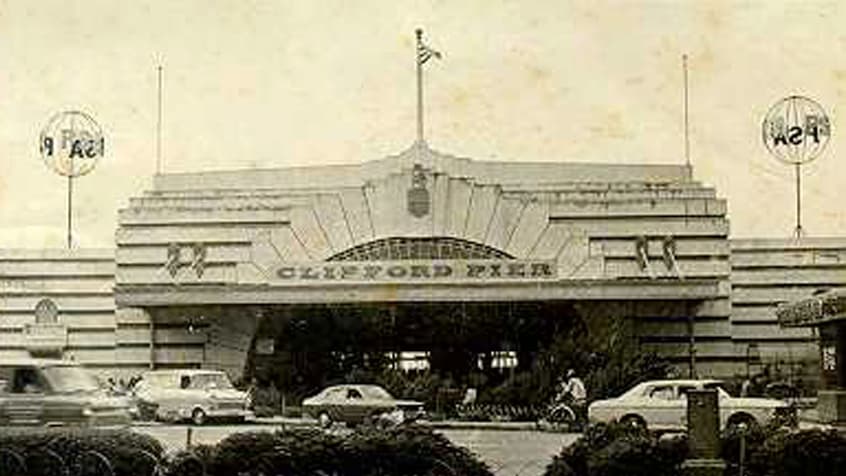
1927: Situated at the mouth of Singapore River, Clifford Pier was built between 1927 and 1933, serving as a key landing and departure point for sea travellers to and from Singapore. Being a landing point for immigrants and the site for processing immigrants in its early years, personnel from customs, immigration and police were all stationed at the pier.
In 1980s, the pier was renovated to provide more space for embarking and disembarking sea travellers.
In 1980s, the pier was renovated to provide more space for embarking and disembarking sea travellers.
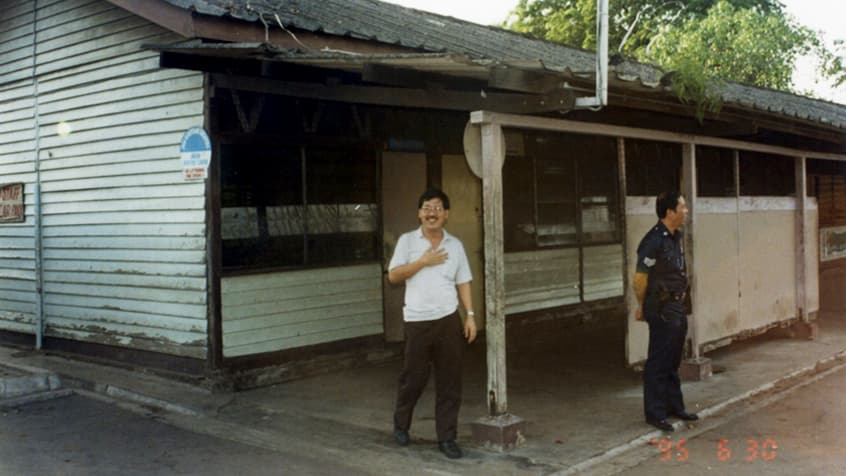
1969: Telok Ayer wharf, a location to house facilities for fish-landing, clearance and distribution was relocated to its current site at Jurong Fishery Port on 26 February.
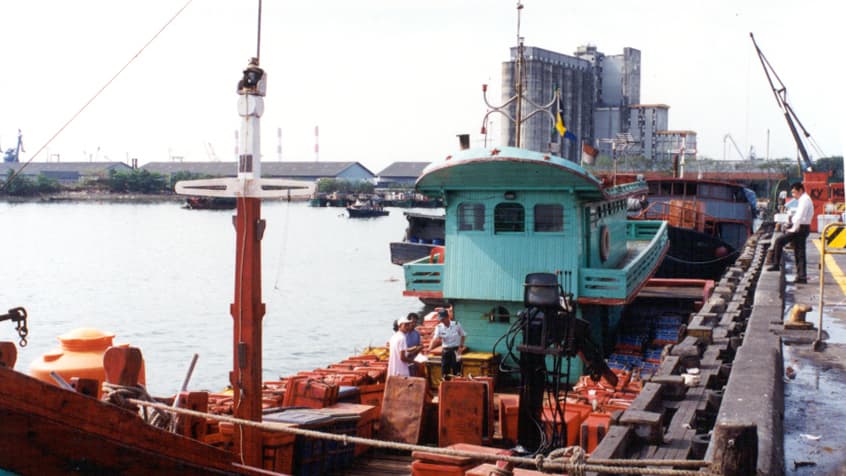
1969: Telok Ayer wharf, a location to house facilities for fish-landing, clearance and distribution was relocated to its current site at Jurong Fishery Port on 26 February.
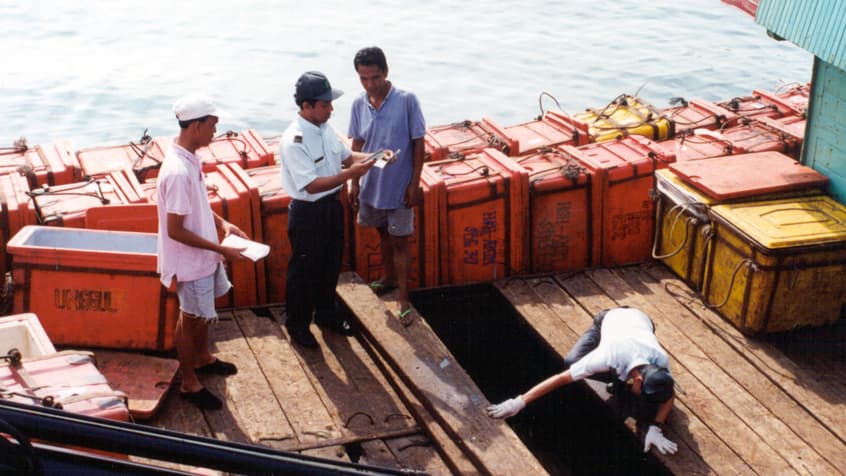
1969: Telok Ayer wharf, a location to house facilities for fish-landing, clearance and distribution was relocated to its current site at Jurong Fishery Port on 26 February.
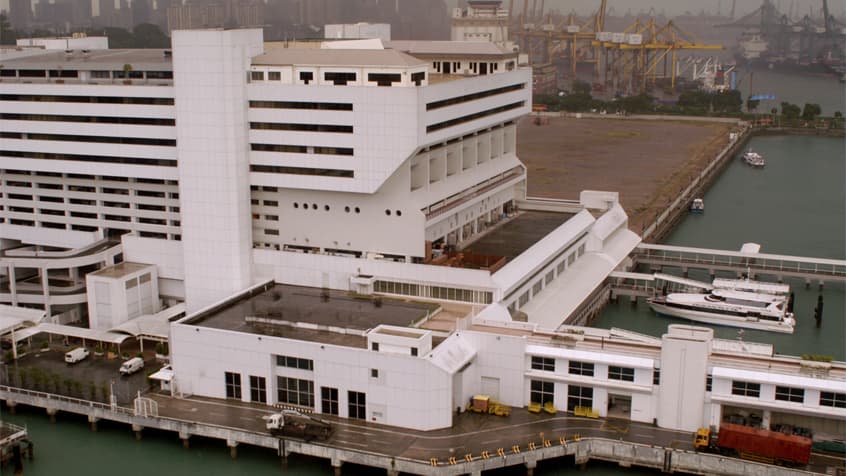
1991: A dedicated international passenger terminal was developed at the Harbourfront Centre to promote cruise tourism. SCC is managed under Singapore Cruise Centre Pte Ltd (SCCPL) under the Temasek Investment Group.
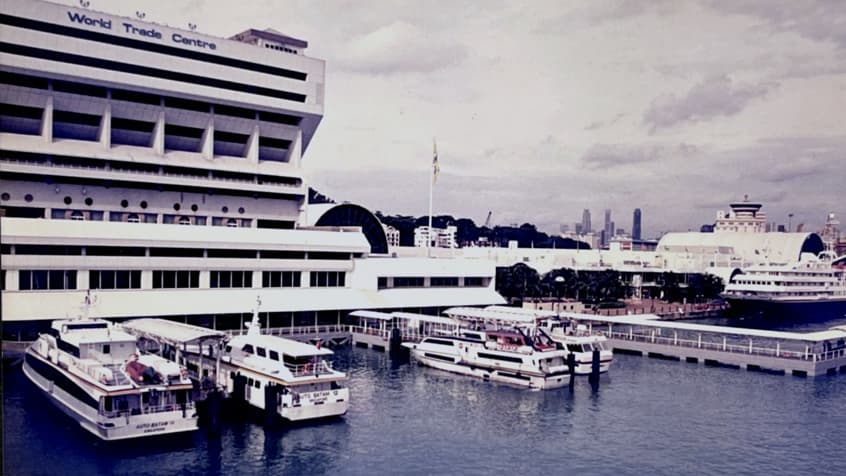
1991: A dedicated international passenger terminal was developed at the Harbourfront Centre to promote cruise tourism. SCC is managed under Singapore Cruise Centre Pte Ltd (SCCPL) under the Temasek Investment Group.
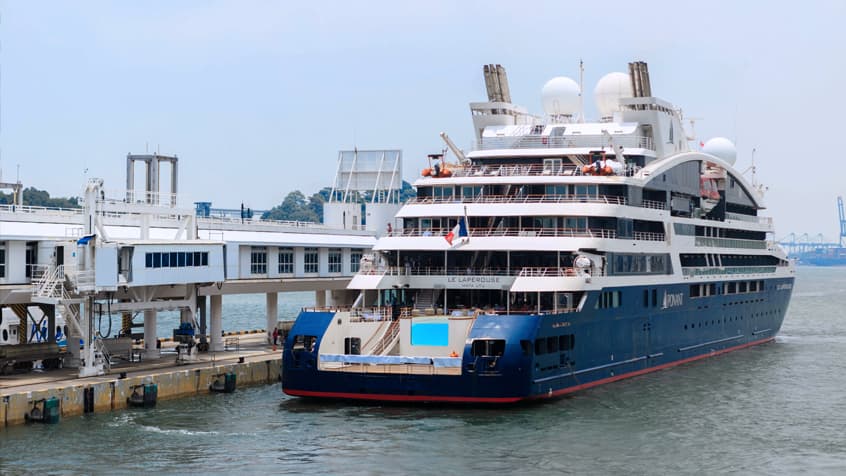
1991: A dedicated international passenger terminal was developed at the Harbourfront Centre to promote cruise tourism. SCC is managed under Singapore Cruise Centre Pte Ltd (SCCPL) under the Temasek Investment Group.
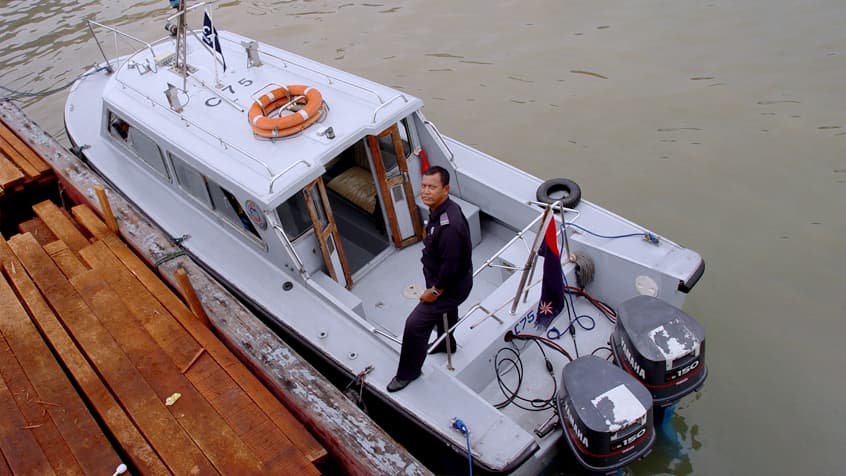
1991: A dedicated international passenger terminal was developed at the Harbourfront Centre to promote cruise tourism. SCC is managed under Singapore Cruise Centre Pte Ltd (SCCPL) under the Temasek Investment Group.
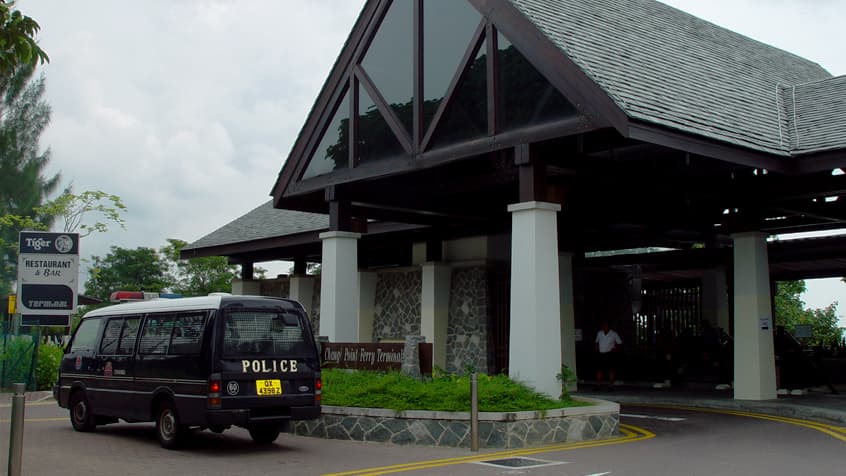
1993: In May, operations began at Changi Ferry Terminal where ferry services operated between Singapore and Johor. In the same decade, Tanah Merah Ferry Terminal started operations to cater for the increased regional ferry traffic in 1995.

1993: In May, operations began at Changi Ferry Terminal where ferry services operated between Singapore and Johor. In the same decade, Tanah Merah Ferry Terminal started operations to cater for the increased regional ferry traffic in 1995.
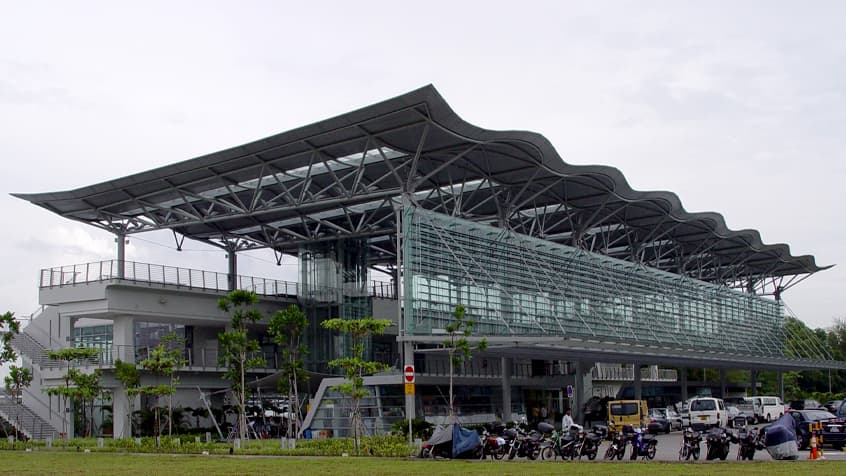
2004: It was announced that Clifford Pier would be replaced by the new Marina South Pier as part of redevelopment plans to build the Marina Bay area into a lifestyle hub. Sea traffic was relocated to Marina South Pier in April 2006.

2004: It was announced that Clifford Pier would be replaced by the new Marina South Pier as part of redevelopment plans to build the Marina Bay area into a lifestyle hub. Sea traffic was relocated to Marina South Pier in April 2006.
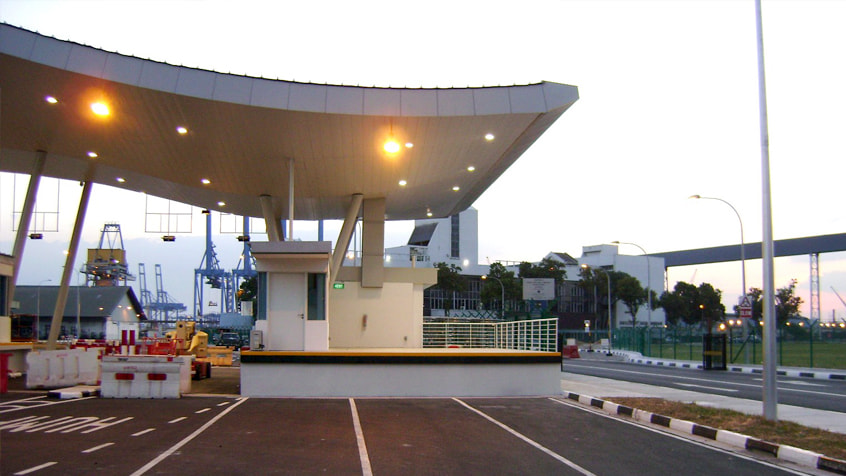
2008: A new cargo gate known as the Jurong Port Main Gate (JPMG) was opened on 1 December. The new checkpoint provided bigger and improved infrastructural facilities to handle the increasing cargo traffic using the Jurong Free Trade Zone.
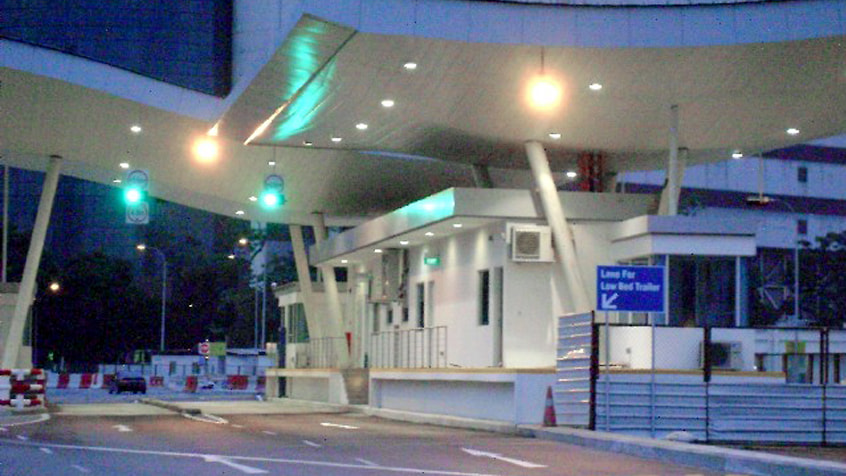
2008: A new cargo gate known as the Jurong Port Main Gate (JPMG) was opened on 1 December. The new checkpoint provides bigger and improved infrastructural facilities to handle the increasing cargo traffic using the Jurong Free Trade Zone.
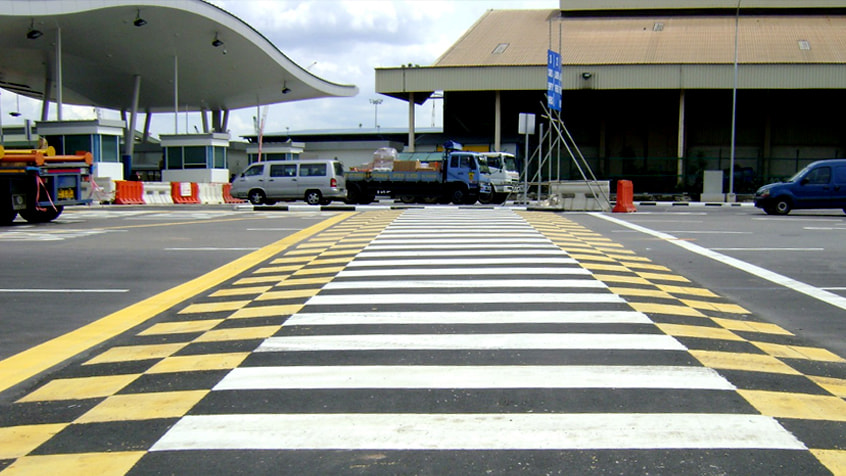
2008: A new cargo gate known as the Jurong Port Main Gate (JPMG) was opened on 1 December. The new checkpoint provides bigger and improved infrastructural facilities to handle the increasing cargo traffic using the Jurong Free Trade Zone.
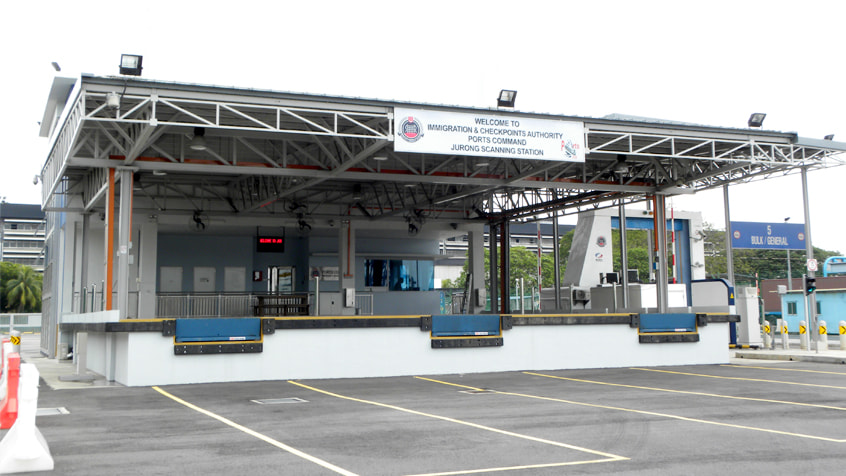
2009: The Jurong Scanning Station (JSS) was officially opened on 5 May. JSS was equipped with a portal system, made up of an integrated scanning system to scan containers for contraband as well as a passive radiation detection system to detect radioactive materials hidden in containers.
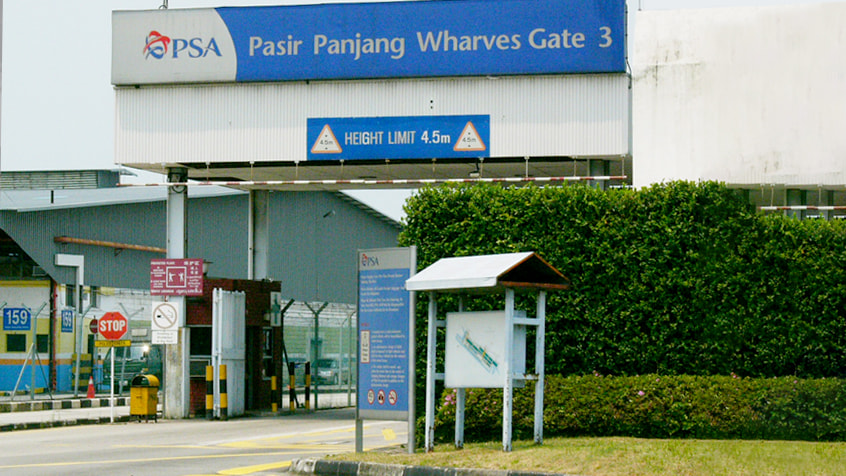
2009: On 30 September, the Pasir Panjang Gate 3 (PPG3) ceased operations after more than three decades to make way for the construction of additional container berths under the Master Plan of the Maritime & Port Authority and Port of Singapore Authority Corporation. With the closure of PPG3, the clearance of car carriers and vehicles transporting taxable ship spares and sea stores to vessels was transferred to Pasir Panjang Terminal Gate 4.
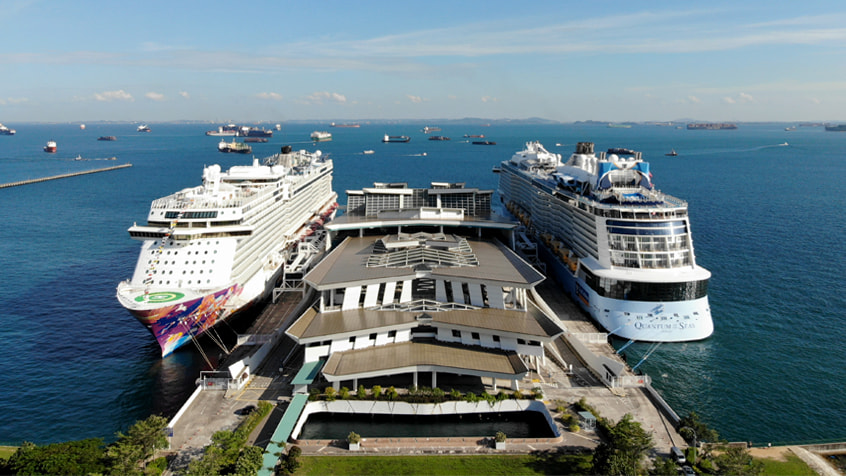
2012: Completed in May, Marina Bay Cruise Centre received its first ship for leisure, the Voyager of the Seas. The terminal is operated by SATS-Creuers Cruise Services.
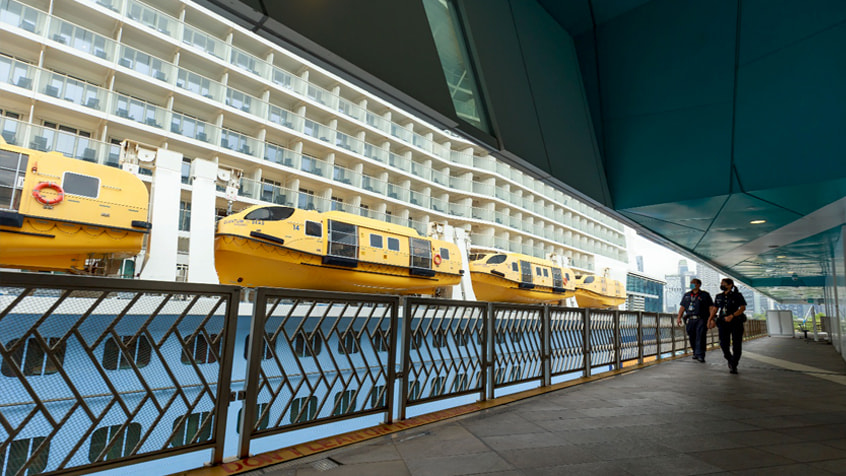
2012: Completed in May, Marina Bay Cruise Centre received its first ship for leisure, the Voyager of the Seas. The terminal is operated by SATS-Creuers Cruise Services.
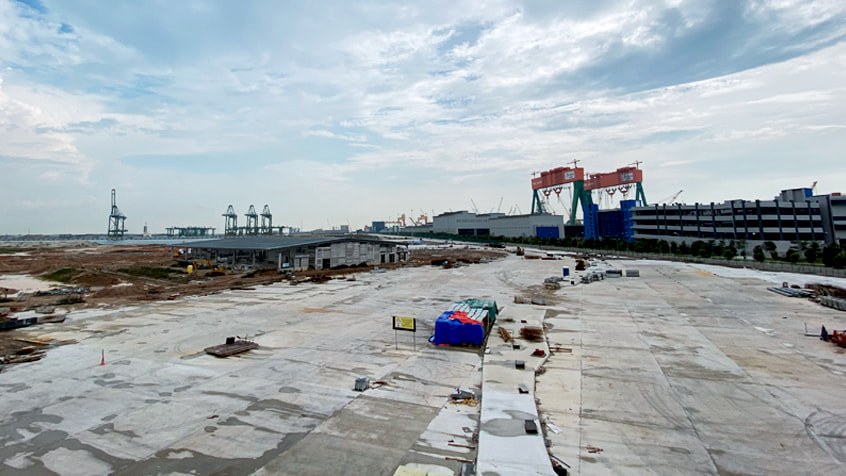
2022: The Tuas Port was officially opened on 1 September, with the first three berths operational at phase one of the development. The terminal is progressively being developed in four phases to consolidate current operations at Tanjong Pagar, Keppel, Brani and Pasir Panjang terminals. Tuas Port will be fully operationalised in 2040 and is expected to be the world's largest fully automated container terminal in a single location.
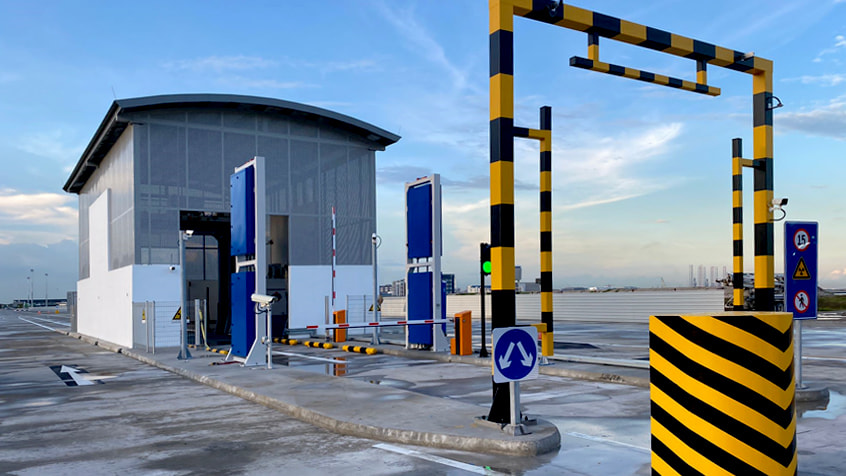
2022: The Tuas Port was officially inaugrated on 1 September 2022, with the first three berths operational at phase one of the development. The terminal is progressively being developed in four phases to consolidate current operations at Tanjong Pagar, Keppel, Brani and Pasir Panjang terminals. Tuas Port will be fully operationalised in 2040 and is expected to be the world's largest fully automated container terminal in a single location.
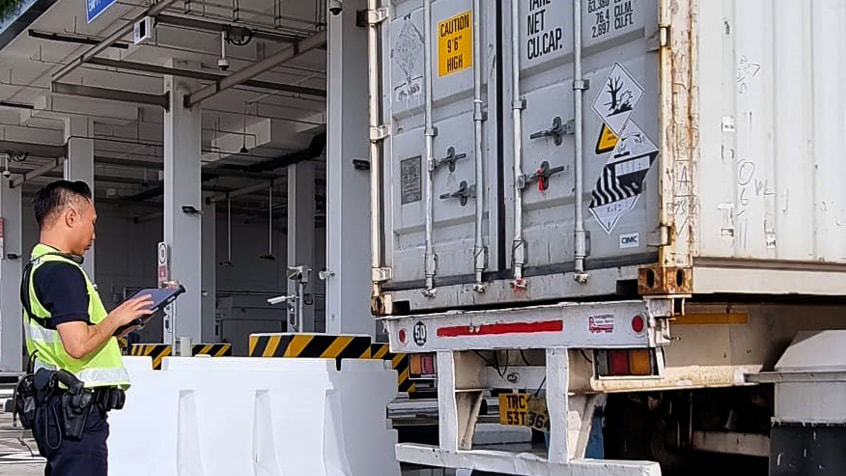
2022: The Tuas Port was officially inaugrated on 1 September 2022, with the first three berths operational at phase one of the development. The terminal is progressively being developed in four phases to consolidate current operations at Tanjong Pagar, Keppel, Brani and Pasir Panjang terminals. Tuas Port will be fully operationalised in 2040 and is expected to be the world's largest fully automated container terminal in a single location.
.jpg?sfvrsn=665b8e60_2)
2022: The Tuas Port was officially inaugrated on 1 September 2022, with the first three berths operational at phase one of the development. The terminal is progressively being developed in four phases to consolidate current operations at Tanjong Pagar, Keppel, Brani and Pasir Panjang terminals. Tuas Port will be fully operationalised in 2040 and is expected to be the world's largest fully automated container terminal in a single location.
Evolution of Technology and Systems
1978
1981
1997
1998
2004
2005
2006
2007
2008
2009
2012
2017
2018
2019
2020
2021
2022
2023
2024
2025
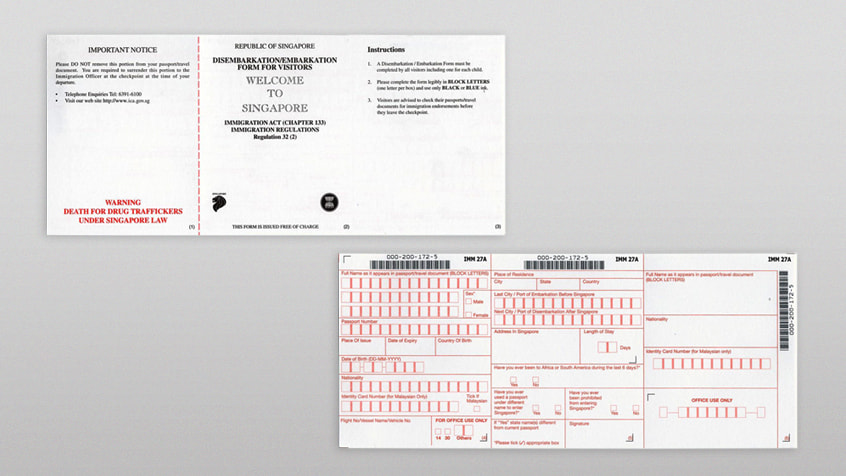
1978: Disembarkation/Embarkation Forms
In the late 70s, Exit Control Scheme was implemented and Singapore introduced the disembarkation/embarkation (D/E) forms (commonly known as "white cards") for foreign visitors to submit their arrival information for immigration clearance. It was also to prevent visitors from overstaying illegally in Singapore. D/E forms were to be completed by all foreign visitors and produced together with his/her passport to the immigration officer on arrival at the entry point.
Today, travellers no longer rely on pen and paper to fill up the "white card". Instead they can conveniently submit their arrival information, including one's health declaration within three days before they enter Singapore, via the Singapore Arrival Card (SGAC) e-Service on ICA's website or MyICA mobile.
In the late 70s, Exit Control Scheme was implemented and Singapore introduced the disembarkation/embarkation (D/E) forms (commonly known as "white cards") for foreign visitors to submit their arrival information for immigration clearance. It was also to prevent visitors from overstaying illegally in Singapore. D/E forms were to be completed by all foreign visitors and produced together with his/her passport to the immigration officer on arrival at the entry point.
Today, travellers no longer rely on pen and paper to fill up the "white card". Instead they can conveniently submit their arrival information, including one's health declaration within three days before they enter Singapore, via the Singapore Arrival Card (SGAC) e-Service on ICA's website or MyICA mobile.
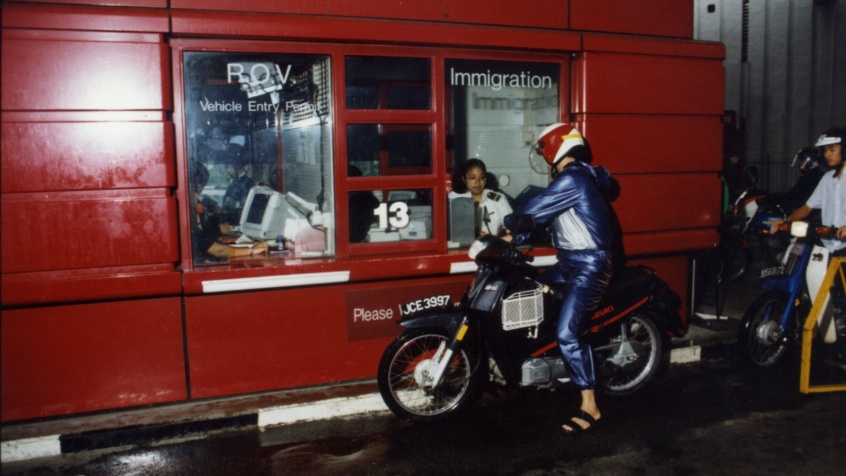
1981: Computerisation
Computers were used to screen travellers at the checkpoints for the first time in June so that tasks could be carried out more effectively.
Computers were used to screen travellers at the checkpoints for the first time in June so that tasks could be carried out more effectively.
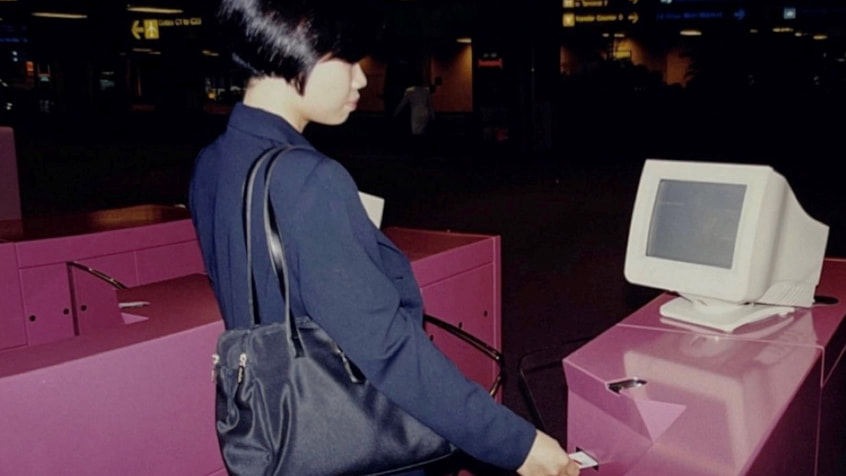
1997: Immigration Automated Clearance System
Singapore's automated immigration clearance lanes, known as the Immigration Automated Clearance System (IACS) then, were implemented in 1997. Only registered frequent travellers with an access card that contained one's fingerprint data, could use these lanes.
Singapore's automated immigration clearance lanes, known as the Immigration Automated Clearance System (IACS) then, were implemented in 1997. Only registered frequent travellers with an access card that contained one's fingerprint data, could use these lanes.
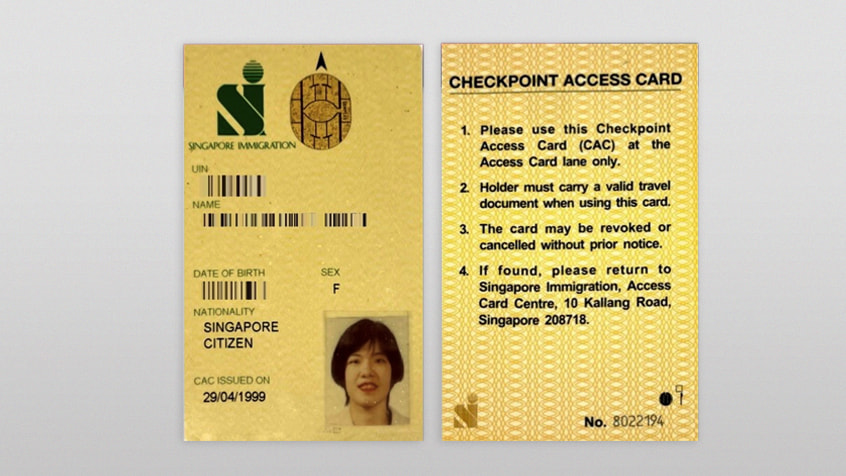
An access card
1997: Immigration Automated Clearance System
Singapore's automated immigration clearance lanes, known as the Immigration Automated Clearance System (IACS) then, were implemented in 1997. Only registered frequent travellers with an access card that contained one's fingerprint data, could use these lanes.
Singapore's automated immigration clearance lanes, known as the Immigration Automated Clearance System (IACS) then, were implemented in 1997. Only registered frequent travellers with an access card that contained one's fingerprint data, could use these lanes.
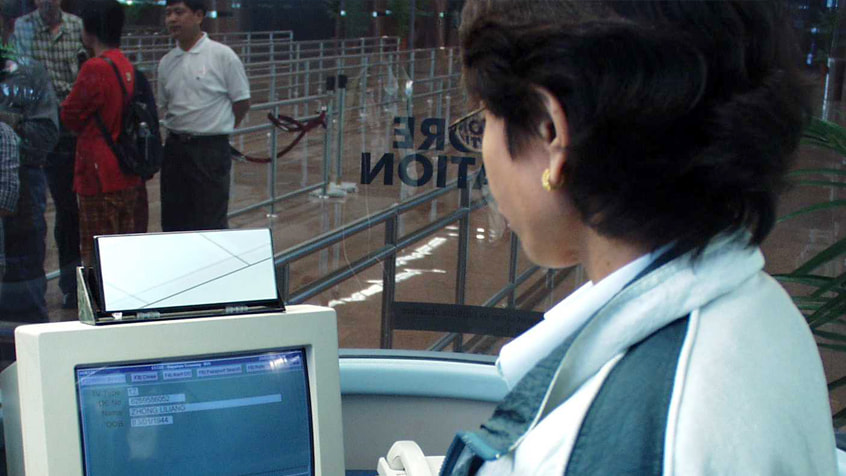
1998: Entry Exit Control Upgraded System
The Entry Exit Control Upgraded System (EECUS), a primary clearance system to screen and capture movement records of travellers, was introduced at Tuas Checkpoint in 1998 and later in Woodlands Train Checkpoint.
The Entry Exit Control Upgraded System (EECUS), a primary clearance system to screen and capture movement records of travellers, was introduced at Tuas Checkpoint in 1998 and later in Woodlands Train Checkpoint.
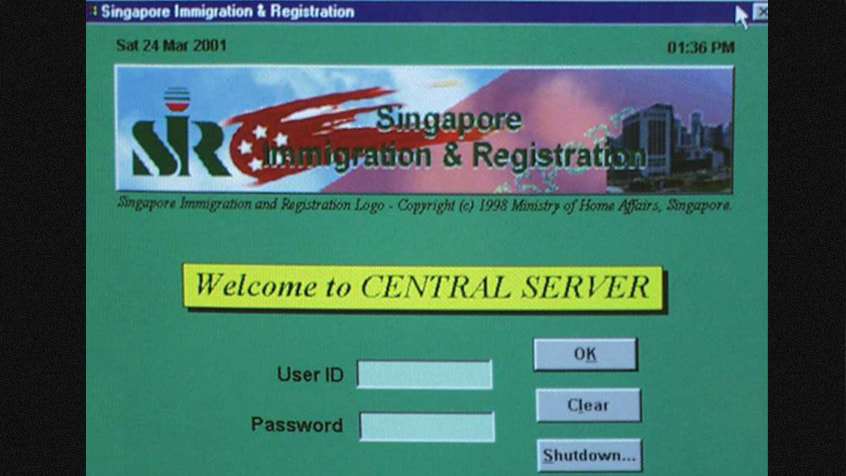
EECUS
1998: Entry Exit Control Upgraded System
The Entry Exit Control Upgraded System (EECUS), a primary clearance system to screen and capture movement records of travellers, was introduced at Tuas Checkpoint in 1998 and later in Woodlands Train Checkpoint.
The Entry Exit Control Upgraded System (EECUS), a primary clearance system to screen and capture movement records of travellers, was introduced at Tuas Checkpoint in 1998 and later in Woodlands Train Checkpoint.
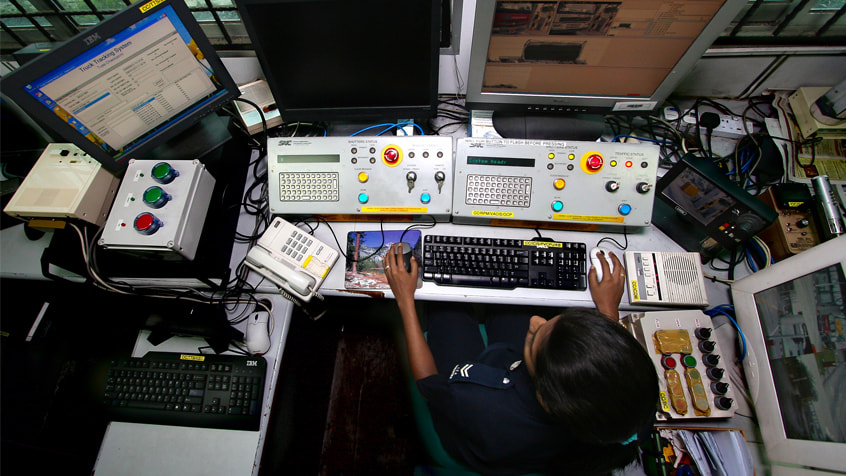
2004: Integrated Container Inspection System
The Integrated Container Inspection System (ICIS) had been used to scan cargoes passing through Woodlands Checkpoint since 2004 and Tuas Checkpoint since 2005. It was expanded to scanning stations of Ports Command and the Changi Airfreight Centre of Air Cargo Command by 2008. It consisted of two portals equipped with scanners - the Vehicle and Cargo Inspection system would scan cargo vehicles or containers for suspicious items, and the radiation portal would scan for radioactive materials. These scanners allowed the containers and other cargo vehicles to be screened efficiently and effectively.
The Integrated Container Inspection System (ICIS) had been used to scan cargoes passing through Woodlands Checkpoint since 2004 and Tuas Checkpoint since 2005. It was expanded to scanning stations of Ports Command and the Changi Airfreight Centre of Air Cargo Command by 2008. It consisted of two portals equipped with scanners - the Vehicle and Cargo Inspection system would scan cargo vehicles or containers for suspicious items, and the radiation portal would scan for radioactive materials. These scanners allowed the containers and other cargo vehicles to be screened efficiently and effectively.
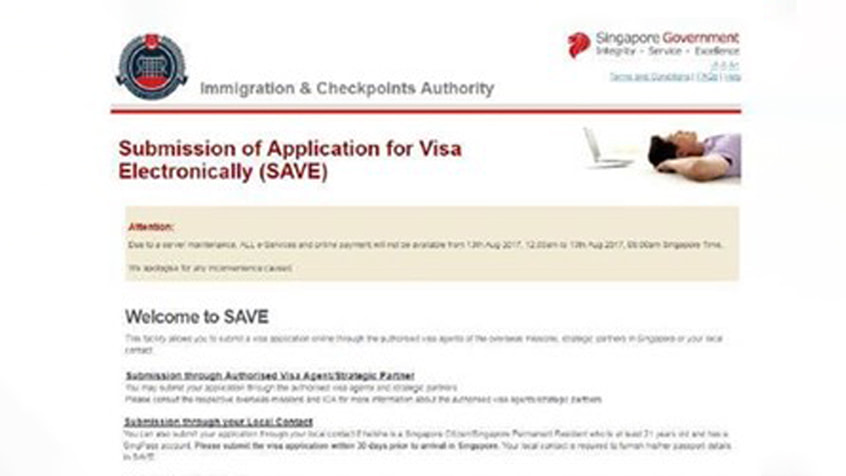
2004: Submission of Application for Visa Electronically
Submission of Application for Visa Electronically (SAVE) was launched in October, allowing applicants to submit a visa application online through authorised visa agents of the overseas missions, strategic partners in Singapore or local contacts. This improved quality of service and streamlined work processes.
Submission of Application for Visa Electronically (SAVE) was launched in October, allowing applicants to submit a visa application online through authorised visa agents of the overseas missions, strategic partners in Singapore or local contacts. This improved quality of service and streamlined work processes.
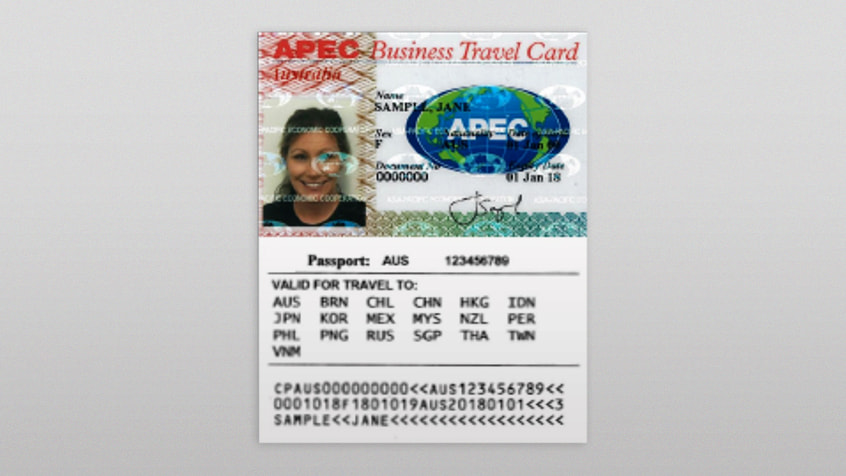
2005: Asia-Pacific Economic Cooperation Business Travel Card
Singapore implemented the Asia-Pacific Economic Cooperation (APEC) Business Travel Card (ABTC) Scheme on 1 October, for which ICA was the issuing authority. The ABTC facilitated business travel between APEC countries and business travellers who held the ABTC. Travellers could enjoy streamlined clearance at major airports and entry points of participating economies. Designated lanes were set up at all checkpoints to provide quick and efficient immigration clearance for foreign cardholders who had been pre-cleared by Singapore.
Singapore implemented the Asia-Pacific Economic Cooperation (APEC) Business Travel Card (ABTC) Scheme on 1 October, for which ICA was the issuing authority. The ABTC facilitated business travel between APEC countries and business travellers who held the ABTC. Travellers could enjoy streamlined clearance at major airports and entry points of participating economies. Designated lanes were set up at all checkpoints to provide quick and efficient immigration clearance for foreign cardholders who had been pre-cleared by Singapore.
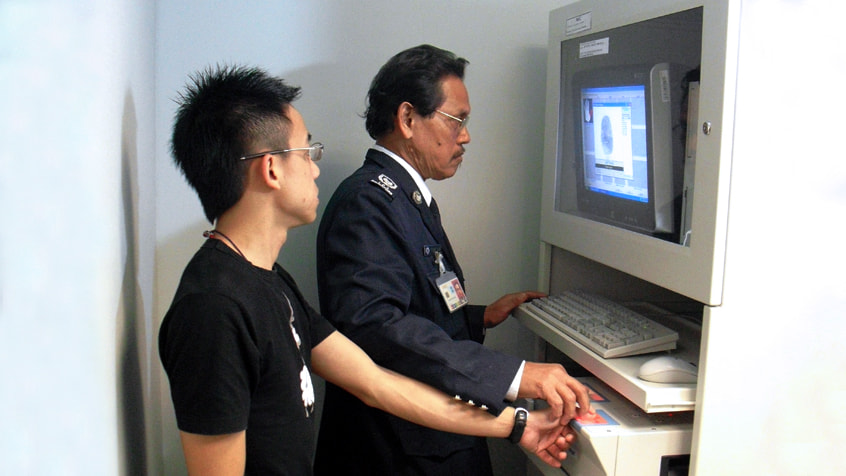
2005: Biometric Database for Immigration Clearance
Biometric Database for Immigration Clearance (BDIC) was implemented at the checkpoints on 1 June. It aims to detect ex-immigration offenders who attempt to re-enter Singapore with different identities.
Biometric Database for Immigration Clearance (BDIC) was implemented at the checkpoints on 1 June. It aims to detect ex-immigration offenders who attempt to re-enter Singapore with different identities.

2005: Computerisation of Records for Crew Clearance
With the introduction of the Computerisation of Records for Crew Clearance (CREW) system, shipping agents entering Singapore were able to submit online applications for crew clearance and related matters. This sped up crew clearance for all parties and facilitated the retrieval of crew and transit passenger records.
With the introduction of the Computerisation of Records for Crew Clearance (CREW) system, shipping agents entering Singapore were able to submit online applications for crew clearance and related matters. This sped up crew clearance for all parties and facilitated the retrieval of crew and transit passenger records.
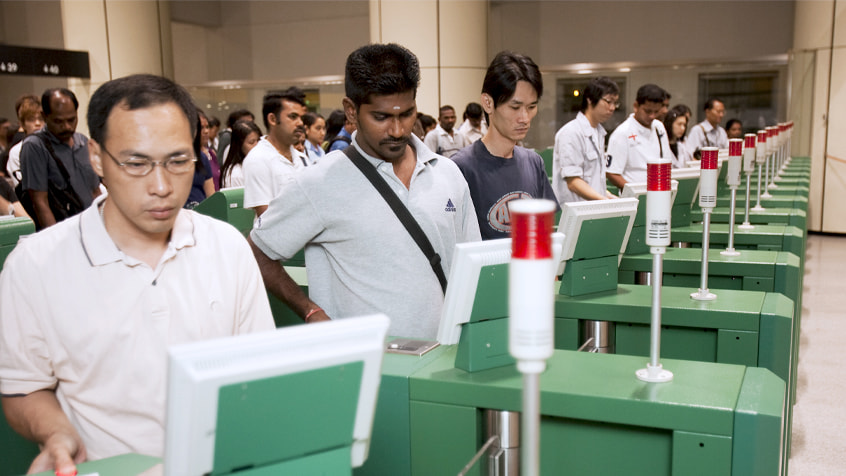
2006: Enhanced Immigration Automated Clearance System
The enhanced Immigration Automated Clearance System (eIACS) enabled Singapore citizens who had registered for their identity cards and held valid machine-readable Singapore passports, to use the automated lanes to clear immigration. This was extended to permanent residents in 2008 and Long-Term Pass holders in 2011.
The enhanced Immigration Automated Clearance System (eIACS) enabled Singapore citizens who had registered for their identity cards and held valid machine-readable Singapore passports, to use the automated lanes to clear immigration. This was extended to permanent residents in 2008 and Long-Term Pass holders in 2011.
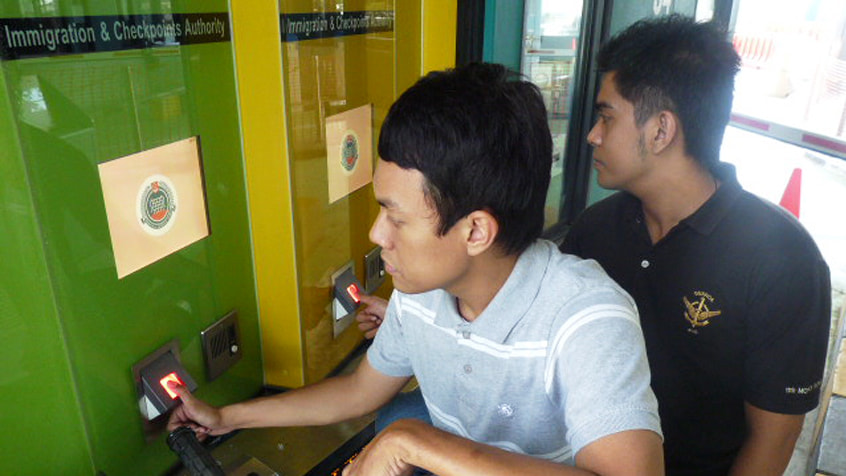
2006: Biometrics Identification of MotorBikers System
Biometrics Identification of MotorBikers System (BIKES) used biometrics and human detection technologies to authenticate single traveller on motorcycles. It was first launched at the Tuas Checkpoint in October 2006 and Woodlands Checkpoint in February 2007. It was subsequently enhanced to clear motorcyclists with pillion riders in 2010.
Biometrics Identification of MotorBikers System (BIKES) used biometrics and human detection technologies to authenticate single traveller on motorcycles. It was first launched at the Tuas Checkpoint in October 2006 and Woodlands Checkpoint in February 2007. It was subsequently enhanced to clear motorcyclists with pillion riders in 2010.
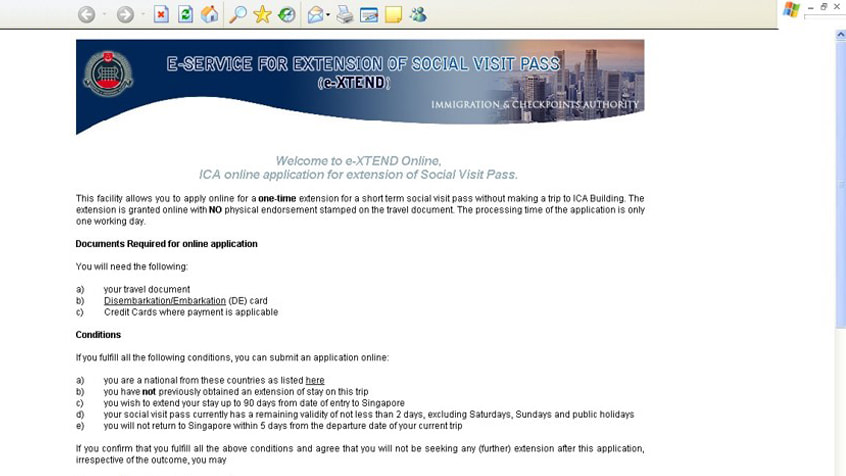
2006: Electronic Extension of Short-Term Visit Pass
Electronic Extension of Short-Term Visit Pass (e-XTEND) enabled foreign visitors to apply for an extension of their short-term visit pass online.
Electronic Extension of Short-Term Visit Pass (e-XTEND) enabled foreign visitors to apply for an extension of their short-term visit pass online.
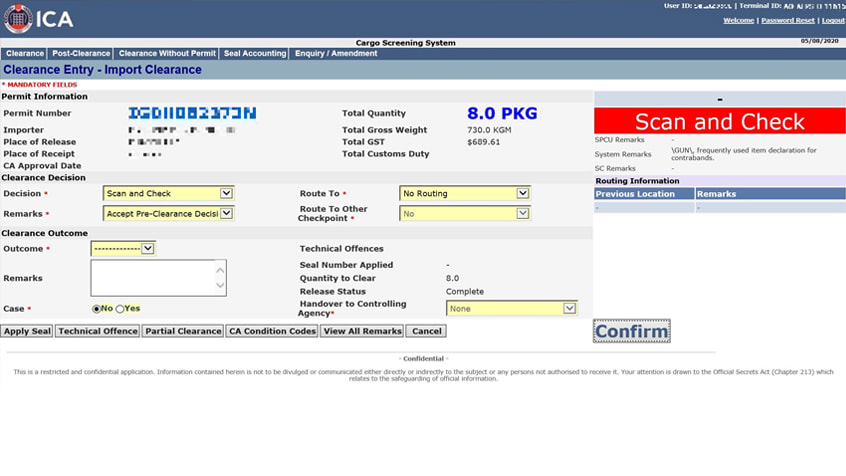
2007: Cargo Screening System
On 29 October, the ICA Cargo Screening System (CASS) was rolled out. It allowed ICA to gather information and conduct analysis on selected consignments through cargo pre-clearance and scanning updating capabilities.
On 29 October, the ICA Cargo Screening System (CASS) was rolled out. It allowed ICA to gather information and conduct analysis on selected consignments through cargo pre-clearance and scanning updating capabilities.
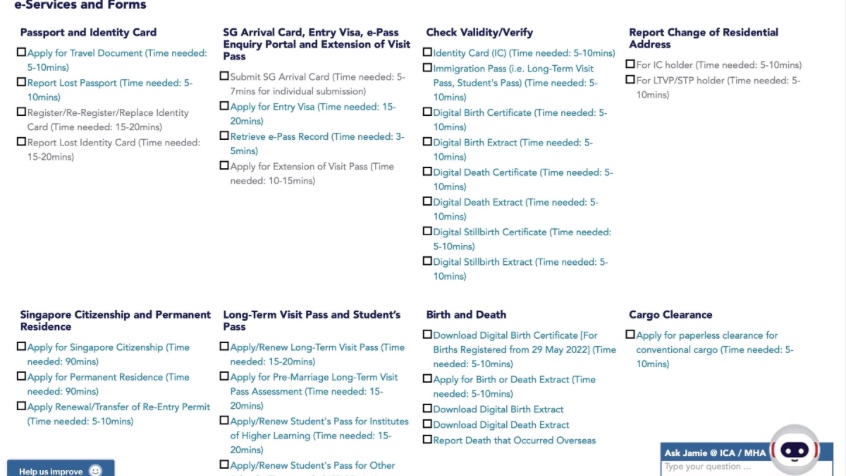
2008: E-Services
e-Visa
e-Visa was an innovative approach which challenged the conventional wisdom that a visa must be issued in physical form. Soft launched in August, the system allowed foreigners who required a visa to apply and 'collect' their visa online without the need for visa stickers for arrival immigration clearance.
e-Visit Pass
e-VP was a facility which allowed online submissions of applications for Long-Term Visit Passes. Launched in June, the system accepted new applications from holders of employment pass eligibility certificate and renewal applications for children, parents and spouses of Singapore citizens or permanent residents; parents and grandparents of Student's Pass holders.
e-Visa
e-Visa was an innovative approach which challenged the conventional wisdom that a visa must be issued in physical form. Soft launched in August, the system allowed foreigners who required a visa to apply and 'collect' their visa online without the need for visa stickers for arrival immigration clearance.
e-Visit Pass
e-VP was a facility which allowed online submissions of applications for Long-Term Visit Passes. Launched in June, the system accepted new applications from holders of employment pass eligibility certificate and renewal applications for children, parents and spouses of Singapore citizens or permanent residents; parents and grandparents of Student's Pass holders.
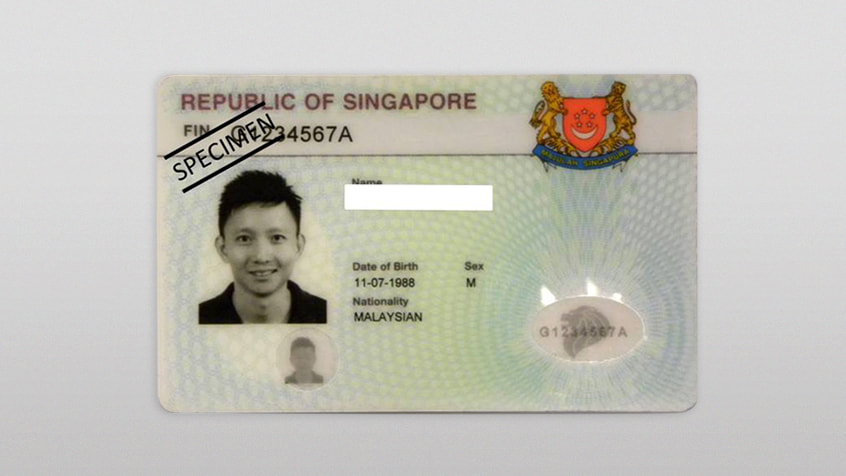
2008: Long-Term Pass Card
The Long-Term Pass (LTP) Card was launched on 23 September to all foreigners on Long-Term Visit Pass (LTVP). The polycarbonate LTP card replaced the stamped endorsement on the travel documents of the LTVP holders and the paper-laminate disembarkation/embarkation (D/E) card issued to them.
The Long-Term Pass (LTP) Card was launched on 23 September to all foreigners on Long-Term Visit Pass (LTVP). The polycarbonate LTP card replaced the stamped endorsement on the travel documents of the LTVP holders and the paper-laminate disembarkation/embarkation (D/E) card issued to them.
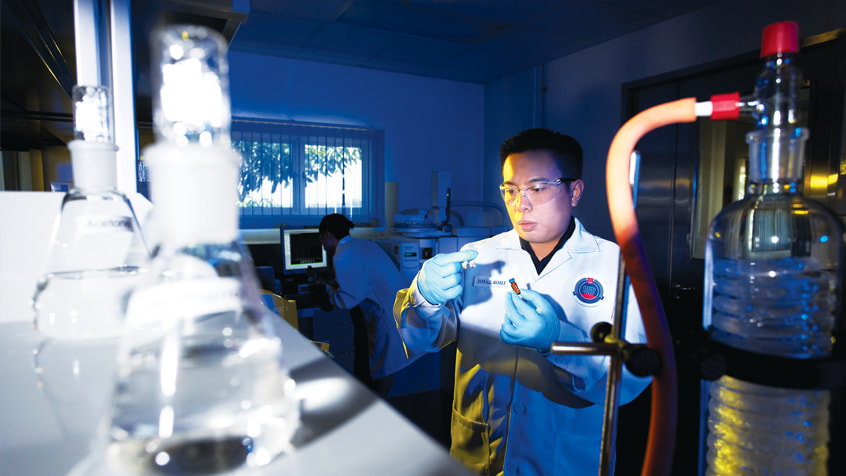
2008: Protective and Analytical Facility
As the first operational laboratory in the world to be based at a country’s border, the Protective and Analytical Facility (PAF) began operations at Tuas Checkpoint on 1 December. This was followed by the Bio Analytical Laboratory and the Chemical Analytical Laboratory at Woodlands Checkpoint in November 2009 and December 2012 respectively. Besides the land checkpoints, the Protective, Analytical and Assessment Facility at Pasir Panjang Scanning Station of Port Command was operationalised in 2016. These border laboratories provide a critical layer of defence against undesirable threats and protect the environmental health and safety of both Singapore and its residents.
As the first operational laboratory in the world to be based at a country’s border, the Protective and Analytical Facility (PAF) began operations at Tuas Checkpoint on 1 December. This was followed by the Bio Analytical Laboratory and the Chemical Analytical Laboratory at Woodlands Checkpoint in November 2009 and December 2012 respectively. Besides the land checkpoints, the Protective, Analytical and Assessment Facility at Pasir Panjang Scanning Station of Port Command was operationalised in 2016. These border laboratories provide a critical layer of defence against undesirable threats and protect the environmental health and safety of both Singapore and its residents.
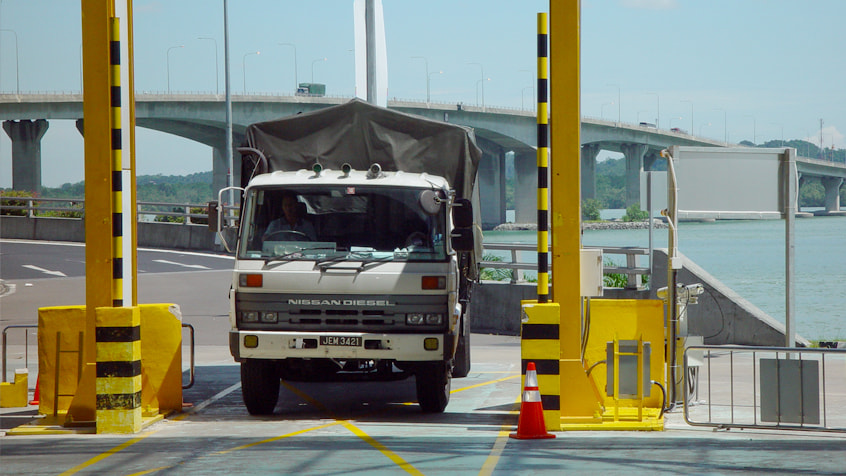
2009: Radiographic Scanner Portal
The Radiographic Scanner Portal (RSP) System deployed to scan inward air shipments at the Changi Airfreight Centre (CAC) of Air Cargo Command, commenced on 10 February. The deployment of the RSP system enabled all cargo vehicles using the CAC checkpoint to go through x-ray screening, thereby enhancing security.
The Radiographic Scanner Portal (RSP) System deployed to scan inward air shipments at the Changi Airfreight Centre (CAC) of Air Cargo Command, commenced on 10 February. The deployment of the RSP system enabled all cargo vehicles using the CAC checkpoint to go through x-ray screening, thereby enhancing security.
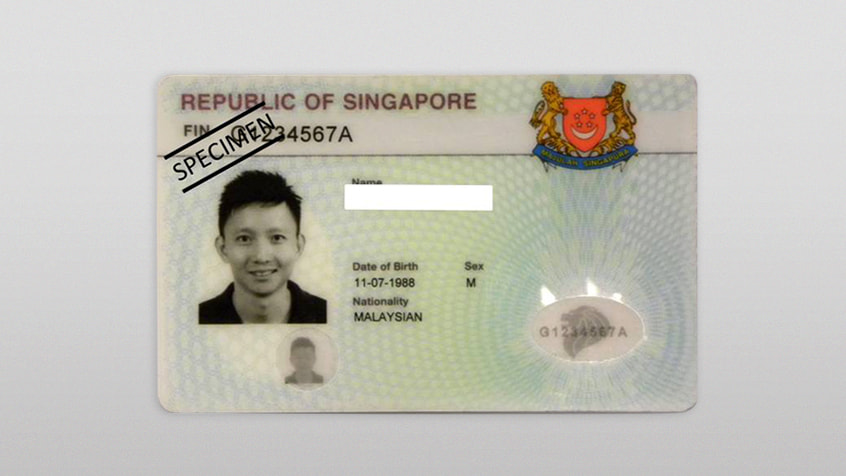
2012: Long-Term Visit Pass Plus
In April, ICA began issuing an immigration pass called LTVP-Plus (LTVP+) to eligible foreign spouses of Singapore citizens. LTVP+ holders could enjoy a longer period of residency, healthcare subsidies and ease of obtaining employment.
In April, ICA began issuing an immigration pass called LTVP-Plus (LTVP+) to eligible foreign spouses of Singapore citizens. LTVP+ holders could enjoy a longer period of residency, healthcare subsidies and ease of obtaining employment.
.jpg?sfvrsn=613319b5_2)
2012: Mobile Automated Verification and Identification System
Mobile Automated Verification and Identification System (MAVIS) is a mobile device which allows officers to perform fingerprint and facial screening anytime, anywhere on travellers to ascertain their identity, validity of work passes, long-term visit passes, special passes and identity cards holders.
Mobile Automated Verification and Identification System (MAVIS) is a mobile device which allows officers to perform fingerprint and facial screening anytime, anywhere on travellers to ascertain their identity, validity of work passes, long-term visit passes, special passes and identity cards holders.
.jpg?sfvrsn=b0ca663b_2)
2012: Flexible Immigration Clearance System
Flexible Immigration Clearance System (Flexi-i), a hybrid lane that could be transformed from an automated lane into a manned counter and vice versa, was first implemented at Marina Bay Cruise Centre Singapore (MBCCS) in May. It allowed ICA to optimise its resources by adjusting the ratio of automated lanes and manned lanes to meet operational needs.
Flexible Immigration Clearance System (Flexi-i), a hybrid lane that could be transformed from an automated lane into a manned counter and vice versa, was first implemented at Marina Bay Cruise Centre Singapore (MBCCS) in May. It allowed ICA to optimise its resources by adjusting the ratio of automated lanes and manned lanes to meet operational needs.
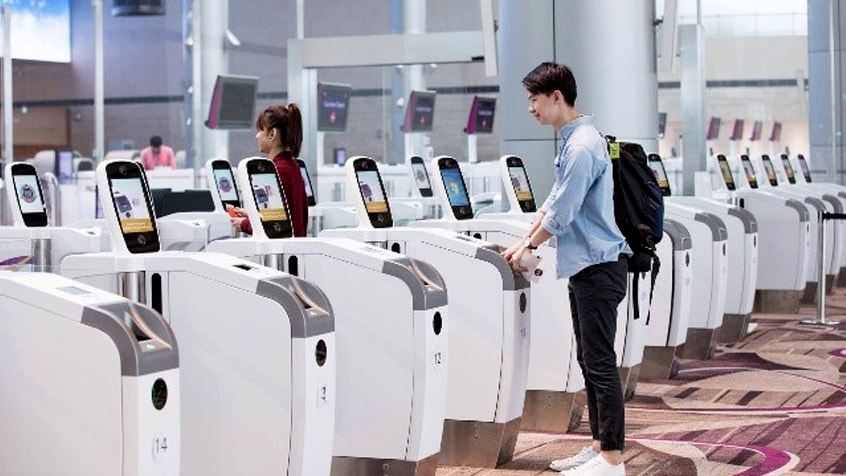
2017: Fast & Seamless Travel
As part of Changi Airport’s Fast & Seamless Travel (FAST) initiative, ICA’s automated lanes at Terminal 4 were enhanced to incorporate departure access controls and immigration clearance.
As part of Changi Airport’s Fast & Seamless Travel (FAST) initiative, ICA’s automated lanes at Terminal 4 were enhanced to incorporate departure access controls and immigration clearance.
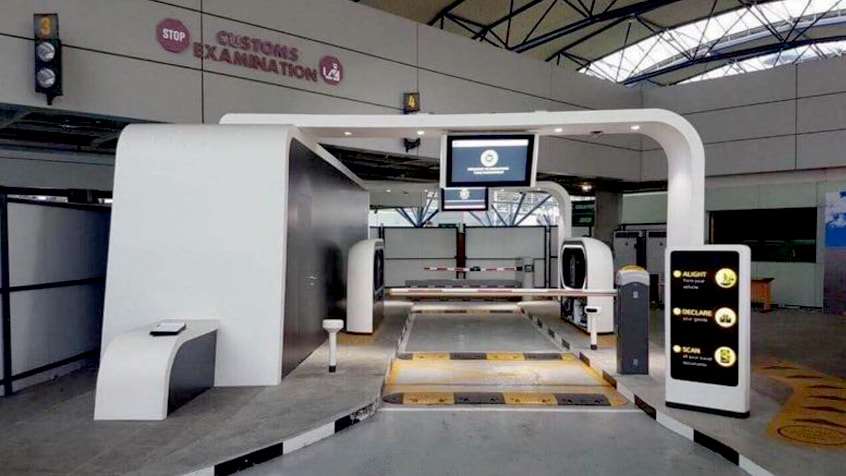
2017: Automated Passenger In-car Clearance System
Known as the Automated Passenger In-car Clearance System (APICS), the prototype was developed to improve security and service experience for car travel at our land checkpoints by leveraging biometric and intelligent robotics technology. Travellers could perform immigration self-clearance while seated in their cars through the use of biometric scanners. The working prototype of APICS was on trial at Woodlands and Tuas Checkpoints.
Known as the Automated Passenger In-car Clearance System (APICS), the prototype was developed to improve security and service experience for car travel at our land checkpoints by leveraging biometric and intelligent robotics technology. Travellers could perform immigration self-clearance while seated in their cars through the use of biometric scanners. The working prototype of APICS was on trial at Woodlands and Tuas Checkpoints.
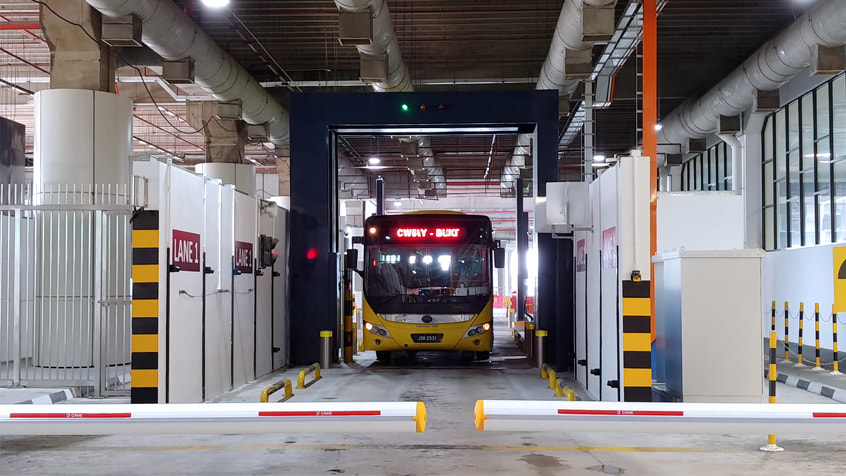
2018: Bus Scanning at Tuas Checkpoint
Instead of boarding buses to visually check for hidden goods and people, the scanners at Tuas Checkpoint enabled our officers to spot anomalies in various parts of the bus. Based on anomalies flagged by the scanner, targeted checks on specific parts of the bus will be conducted. This has produced better security outcomes and allowed ICA to clear a larger number of buses at a faster rate.
Instead of boarding buses to visually check for hidden goods and people, the scanners at Tuas Checkpoint enabled our officers to spot anomalies in various parts of the bus. Based on anomalies flagged by the scanner, targeted checks on specific parts of the bus will be conducted. This has produced better security outcomes and allowed ICA to clear a larger number of buses at a faster rate.
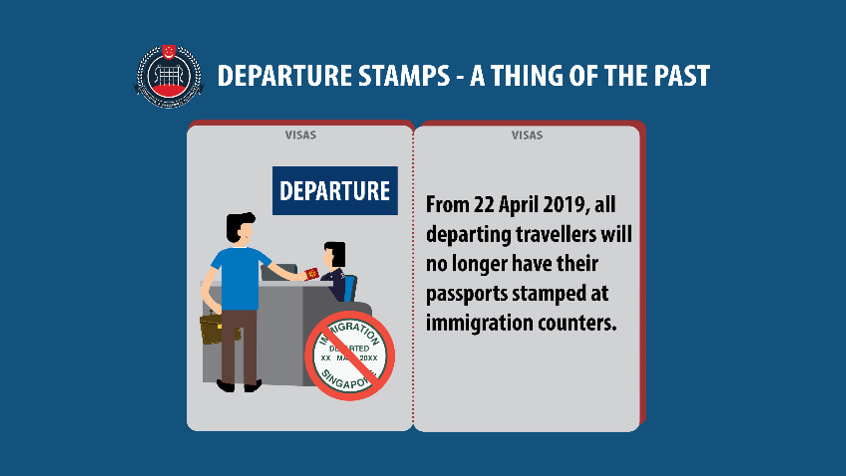
2019: Departure Immigration Endorsement
In April, ICA ceased to issue departure immigration endorsements to all departing foreign travellers, streamlining immigration procedures and providing more efficient departure immigration clearance for travellers.
In April, ICA ceased to issue departure immigration endorsements to all departing foreign travellers, streamlining immigration procedures and providing more efficient departure immigration clearance for travellers.
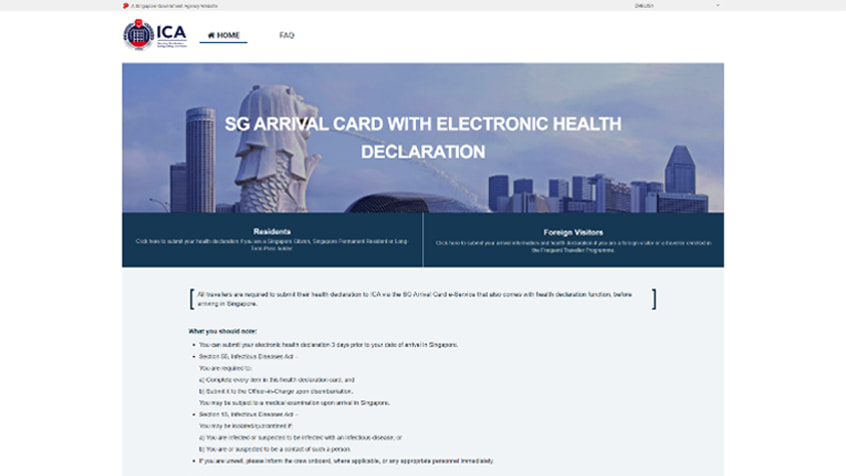
2020: SG Arrival Card e-Service
The SG Arrival Card e-Service, was implemented in March. It enabled travellers to submit information prior to their arrival in Singapore. This replaced the need to fill out a paper-based disembarkation/embarkation card. Travellers could submit their information before they arrived in Singapore.
The SGAC was also integrated with the health declaration function, which became a mandatory requirement for travellers entering Singapore during the COVID-19 pandemic.
The SG Arrival Card e-Service, was implemented in March. It enabled travellers to submit information prior to their arrival in Singapore. This replaced the need to fill out a paper-based disembarkation/embarkation card. Travellers could submit their information before they arrived in Singapore.
The SGAC was also integrated with the health declaration function, which became a mandatory requirement for travellers entering Singapore during the COVID-19 pandemic.
.jpg?sfvrsn=a4fd458f_2)
2020: Multi-Modal Biometrics System
Multi-Modal Biometrics System (MMBS), which uses iris and facial biometrics as primary identifiers for immigration clearance, was implemented in July at all checkpoints. Fingerprints are used as a secondary biometric identifier for travellers who are unsuccessful in their iris and facial scans.
Multi-Modal Biometrics System (MMBS), which uses iris and facial biometrics as primary identifiers for immigration clearance, was implemented in July at all checkpoints. Fingerprints are used as a secondary biometric identifier for travellers who are unsuccessful in their iris and facial scans.
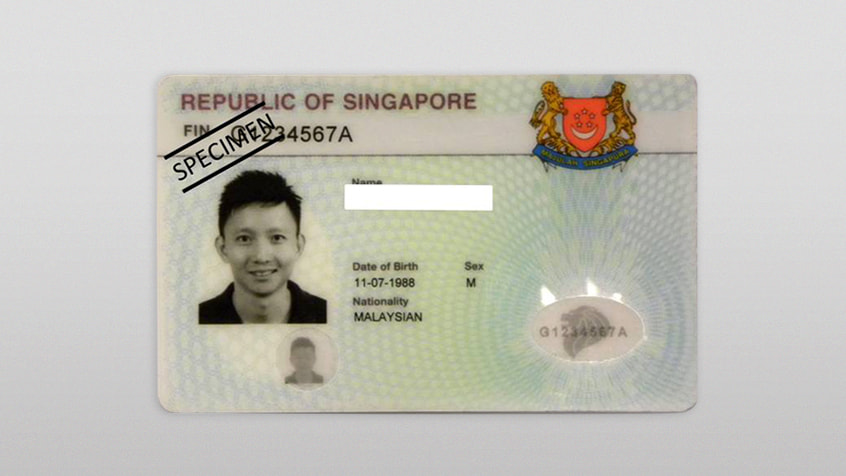
2020: Review of Long-Term Visit Pass E-Services
With the aim to achieve a "No Fuss, No Visit and No Waiting" customer service experience, ICA reviewed its Long-Term Visit Pass (LTVP) processes. In August, the LTVP e-service was enhanced to allow applicants to submit the required documents online and to allow ICA to verify the documents backend early.
Previously, applicants were required to submit hardcopy documents in person at ICA Building for the completion of formalities (COF) for the issuance of the LTVPs. Those who were unable to produce complete documents would be turned away. With the enhancement of the LTVP e-Service, their transaction time at the counter was shortened.
With the aim to achieve a "No Fuss, No Visit and No Waiting" customer service experience, ICA reviewed its Long-Term Visit Pass (LTVP) processes. In August, the LTVP e-service was enhanced to allow applicants to submit the required documents online and to allow ICA to verify the documents backend early.
Previously, applicants were required to submit hardcopy documents in person at ICA Building for the completion of formalities (COF) for the issuance of the LTVPs. Those who were unable to produce complete documents would be turned away. With the enhancement of the LTVP e-Service, their transaction time at the counter was shortened.
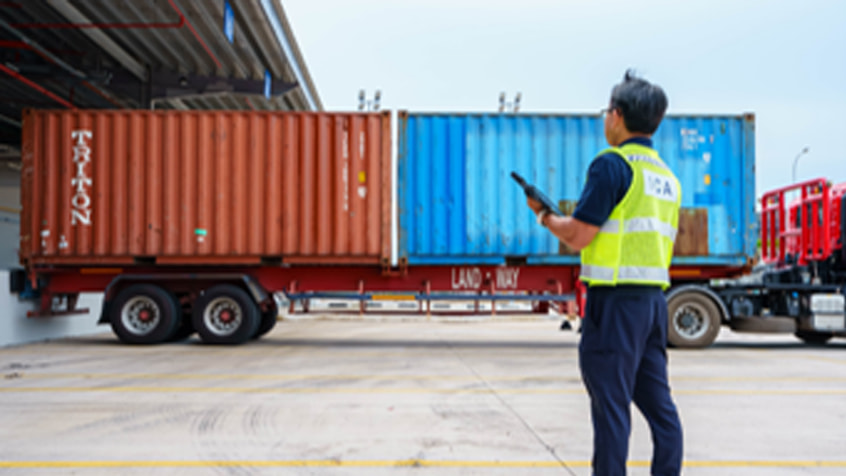
2021: "On-the-Fly" Clearance & Mobile Cargo Screening System
Since October, ICA had progressively implemented “On-the-Fly” clearance and Mobile Cargo Screening System (CASS) at Tuas Port to speed up the cargo clearance process. With “On-the-Fly” clearance, drivers no longer needed to proceed to a holding area to wait for the results of the scanned images of their cargo containers but would be informed of the results en route to the Terminal Exit Gate.
The Mobile CASS allowed officers to validate Cargo Clearance Permits on the spot at the secondary checking bay, without them having to return to the duty office to do so. This reduced waiting time for the drivers.
Since October, ICA had progressively implemented “On-the-Fly” clearance and Mobile Cargo Screening System (CASS) at Tuas Port to speed up the cargo clearance process. With “On-the-Fly” clearance, drivers no longer needed to proceed to a holding area to wait for the results of the scanned images of their cargo containers but would be informed of the results en route to the Terminal Exit Gate.
The Mobile CASS allowed officers to validate Cargo Clearance Permits on the spot at the secondary checking bay, without them having to return to the duty office to do so. This reduced waiting time for the drivers.
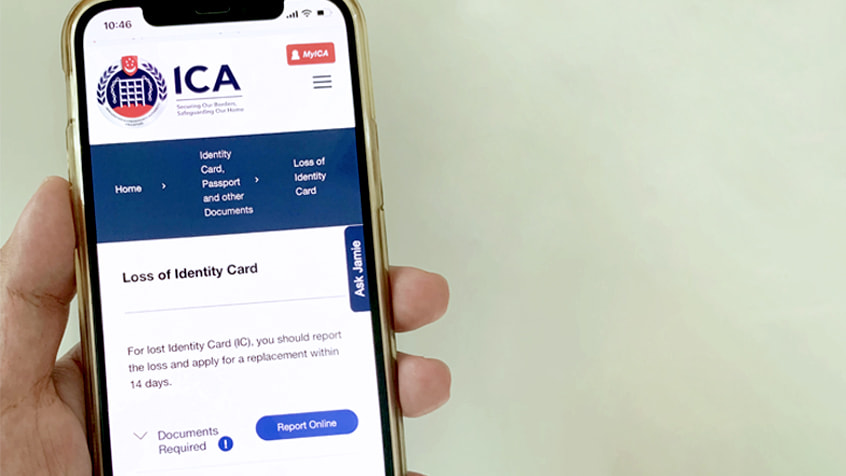
2021: 100% Online Application for ICA's Core Services
ICA successfully moved all its core application services online, including the introduction of an e-Service for the reporting and replacement of lost identity card in October.
ICA successfully moved all its core application services online, including the introduction of an e-Service for the reporting and replacement of lost identity card in October.

2021: Mobile Automated Verification & Identification System (MAVIS 2)
The Mobile Automated Verification & Identification System (MAVIS 2) is ICA's next-generation mobile screening and identfication system. Installed on ICA issued smartphones, the app-based system offers an extensive range of biometrics capabilities (including facial and iris scans) to screen and identify subjects. The system also allows officers to execute important text-based enquiries to verify identities, and establish past travel patterns and declarations of persons of interest. Real-time access to such information allows officers to sense-make on the go and is critical for smarter and more efficient operations.
The Mobile Automated Verification & Identification System (MAVIS 2) is ICA's next-generation mobile screening and identfication system. Installed on ICA issued smartphones, the app-based system offers an extensive range of biometrics capabilities (including facial and iris scans) to screen and identify subjects. The system also allows officers to execute important text-based enquiries to verify identities, and establish past travel patterns and declarations of persons of interest. Real-time access to such information allows officers to sense-make on the go and is critical for smarter and more efficient operations.
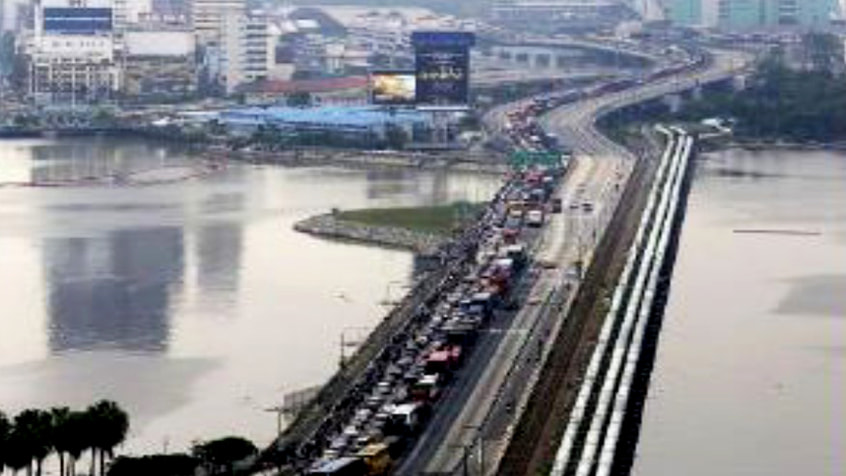
2021: Unmanned Aerial Vehicle
ICA constantly explores new technological capabilities to enhance and future-proof our operational processes. In collaboration with HTX, ICA trialled the use of mobile Unmanned Aerial Vehicle (UAV) to patrol the land checkpoints' perimeters as well as undertake traffic and security surveillance. With the UAVs, the overall surveillance coverage at the land checkpoints can exponentially go beyond static sensors and physical perimeters.
ICA constantly explores new technological capabilities to enhance and future-proof our operational processes. In collaboration with HTX, ICA trialled the use of mobile Unmanned Aerial Vehicle (UAV) to patrol the land checkpoints' perimeters as well as undertake traffic and security surveillance. With the UAVs, the overall surveillance coverage at the land checkpoints can exponentially go beyond static sensors and physical perimeters.
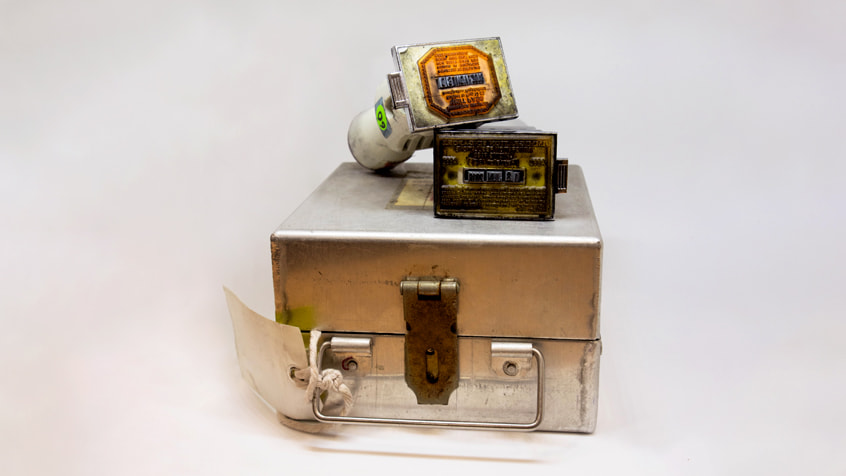
Physical stamps are of the past
2022: E-Pass - Cessation of arrival endorsements
Since March, ICA ceased inked endorsement stamps on passports for foreign visitors arriving in Singapore at all checkpoints. Instead, travellers will receive an e-Pass through email.
Since March, ICA ceased inked endorsement stamps on passports for foreign visitors arriving in Singapore at all checkpoints. Instead, travellers will receive an e-Pass through email.

2022: Cessation of physical endorsement on cargo permits
Physical endorsement on cargo permits for conventional cargo ceased in February. This reduced the turnaround time for vehicles and cargo passing through the cargo checkpoints.
Physical endorsement on cargo permits for conventional cargo ceased in February. This reduced the turnaround time for vehicles and cargo passing through the cargo checkpoints.
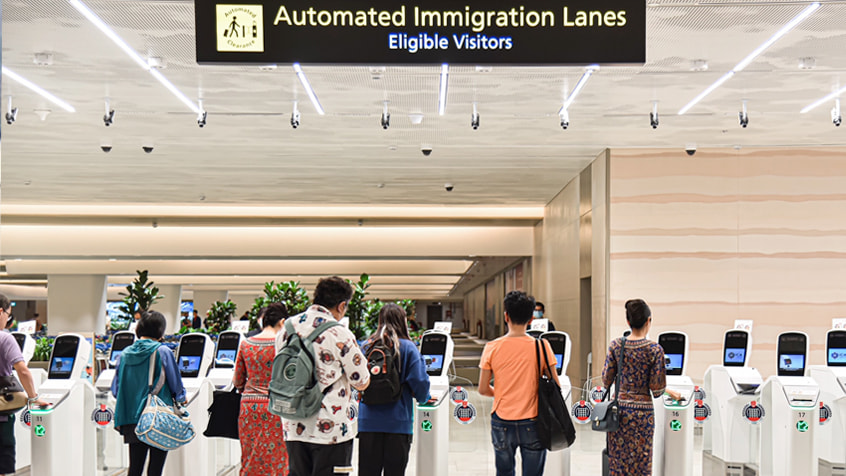
2022: Automated Clearance Initiative
The Automated Clearance Initiative (ACI) with self-enrollment capability has been rolled out progressively since October. Eligible foreign visitors, including those visiting Singapore for the first time, can use the automated lanes for immigration clearance on arrival, without prior enrollment of their biometrics.
The Automated Clearance Initiative (ACI) with self-enrollment capability has been rolled out progressively since October. Eligible foreign visitors, including those visiting Singapore for the first time, can use the automated lanes for immigration clearance on arrival, without prior enrollment of their biometrics.
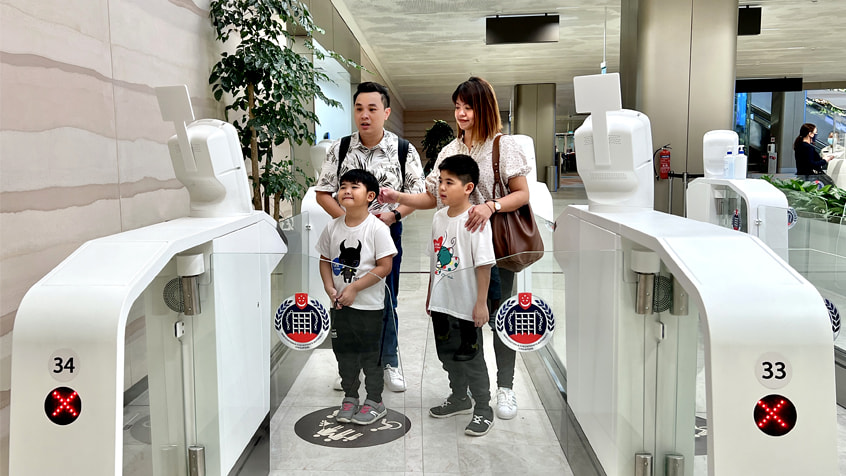
2022: Special Assistance Lanes
In December, Special Assistance Lanes were introduced, making Singapore the first country in the world to introduce an automated lane for multiple travellers to perform self-immigration clearance as a group. ICA will progressively replace all manual counters in the passenger halls with automated lanes to enhance efficiency and traveller experience.
In December, Special Assistance Lanes were introduced, making Singapore the first country in the world to introduce an automated lane for multiple travellers to perform self-immigration clearance as a group. ICA will progressively replace all manual counters in the passenger halls with automated lanes to enhance efficiency and traveller experience.
.jpg?sfvrsn=a33f3475_2)
2023: Digital Long-Term Passes
In February, ICA ceased the issuance of physical Long-Term Pass (LTP) cards. Instead, LTP holders can access and download their digital LTP from digital platforms such as MyICA app or FileSG.
In February, ICA ceased the issuance of physical Long-Term Pass (LTP) cards. Instead, LTP holders can access and download their digital LTP from digital platforms such as MyICA app or FileSG.
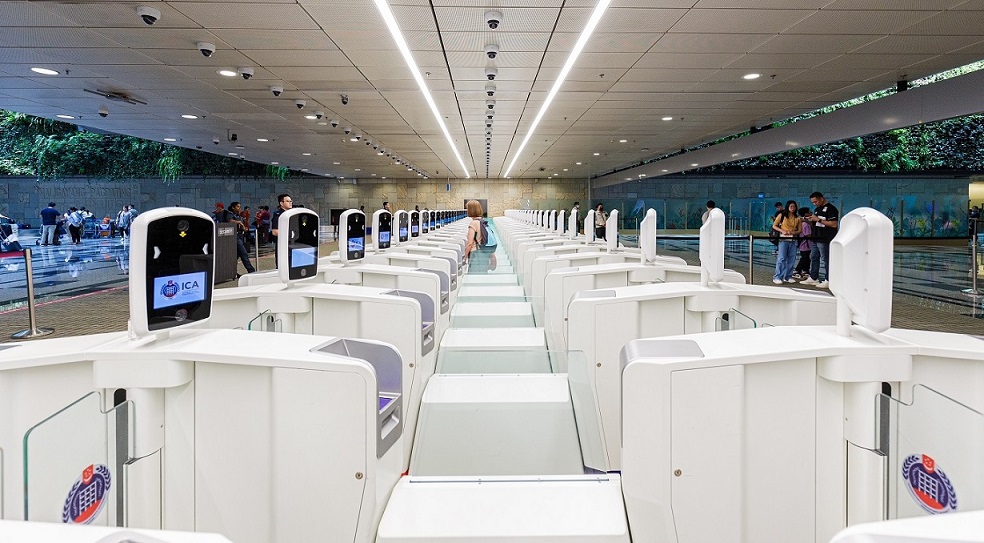
ABCS lanes at Changi Airport
2024: Automated Clearance as the Norm
The Automated Border Clearance System (ABCS) lanes had progressively replaced the current automated lanes and manual counters. Since May 2024, all foreign visitors arriving in Singapore, regardless of nationality, had been able to use the automated lanes at Changi Airport, without prior enrolment. By end-2024, arriving Singapore residents and all departing travellers will be able to enjoy contactless (‘passport-less’) clearance, when travelling through air and sea checkpoints. Singapore may be one of the first in the world to automate all passenger clearance!
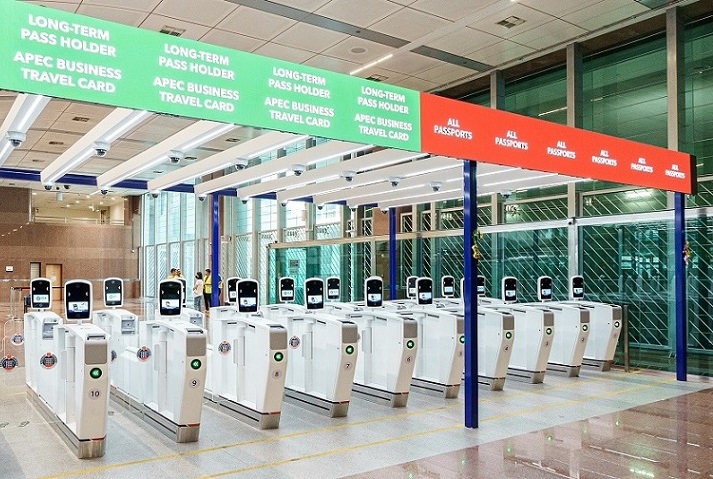
ABCS lanes at Tuas Checkpoint
2024: Automated Clearance as the Norm
The Automated Border Clearance System (ABCS) lanes had progressively replaced the current automated lanes and manual counters. Since May 2024, all foreign visitors arriving in Singapore, regardless of nationality, had been able to use the automated lanes at Changi Airport, without prior enrolment. By end-2024, arriving Singapore residents and all departing travellers will be able to enjoy contactless (‘passport-less’) clearance, when travelling through air and sea checkpoints. Singapore may be one of the first in the world to automate all passenger clearance!
2024: QR Code Clearance at Land Checkpoints
As of 16 December 2024, ICA has implemented QR code clearance for all travellers across all transport modes at our land checkpoints. Travellers now enjoy up to 30% time savings in performing immigration clearance.

Token-less clearance at Changi Airport
2024: Token-less Clearance at Air and Sea Checkpoints
Since September 2024, travellers at Changi Airport can clear immigration using just their facial and iris biometrics, without presenting their passports. This has cut clearance time from 25 to 10 seconds per person.
This token-less clearance process has been extended to Marina Bay Cruise Centre Singapore from 16 December 2024 and will progressively be implemented at the remaining sea checkpoints.
Singapore residents - including citizens, permanent residents, and long-term pass holders – will benefit from token-less clearance at air and sea checkpoints. Foreign travellers will enjoy the same convenience when departing Singapore.
2c0d2973-c512-4654-a83f-49efee6d84f6.jpg?sfvrsn=f2069c5b_1)
Our self-collection kiosks are built with accessibility in mind. Equipped with an auto-adjusting camera, they capture biometrics seamlessly for people of all heights.
2025: Integrated Smart Document Management System (iSMART)
In July 2025, ICA introduced the Integrated Smart Document Management System (iSMART) – an advanced solution that sorts, stores, retrieves, and issues documents using automation, robotics, and biometric technologies.
Now, eligible customers can skip the counter and conveniently collect their passports or identity cards at self-collection kiosks at the ICA Services Centre – quickly, securely, and hassle-free.
f2126452-8525-4b64-bb2e-9ba36082bd43.jpg?sfvrsn=7b2211ce_1)
The iRobo is programmed to deliver documents to self-collection kiosks and service rooms – easing the manual work of tracking and transporting the documents.
2025: Integrated Smart Document Management System (iSMART)
In July 2025, ICA introduced the Integrated Smart Document Management System (iSMART) – an advanced solution that sorts, stores, retrieves, and issues documents using automation, robotics, and biometric technologies.
Now, eligible customers can skip the counter and conveniently collect their passports or identity cards at self-collection kiosks at the ICA Services Centre – quickly, securely, and hassle-free.
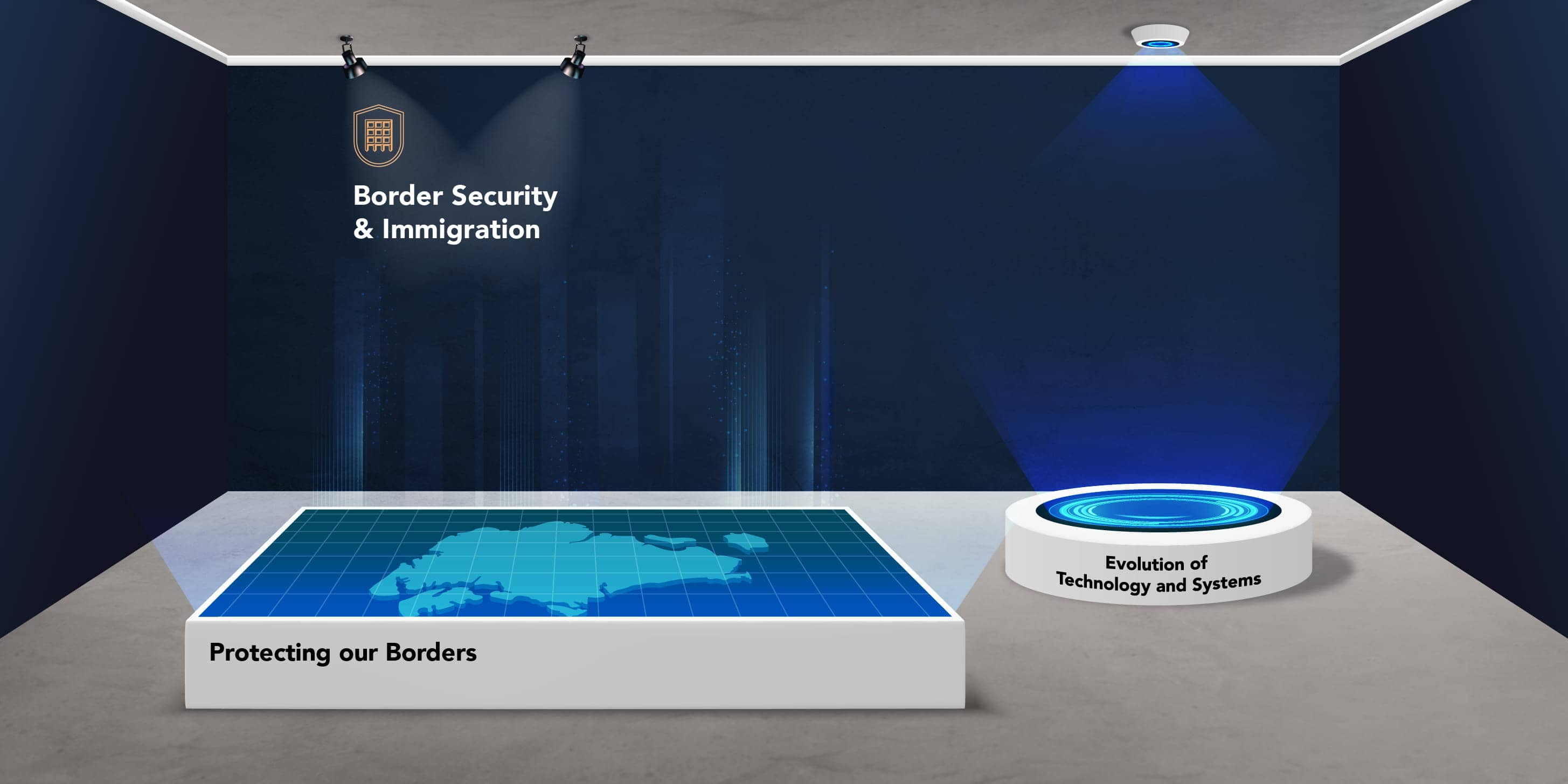





Share this link via